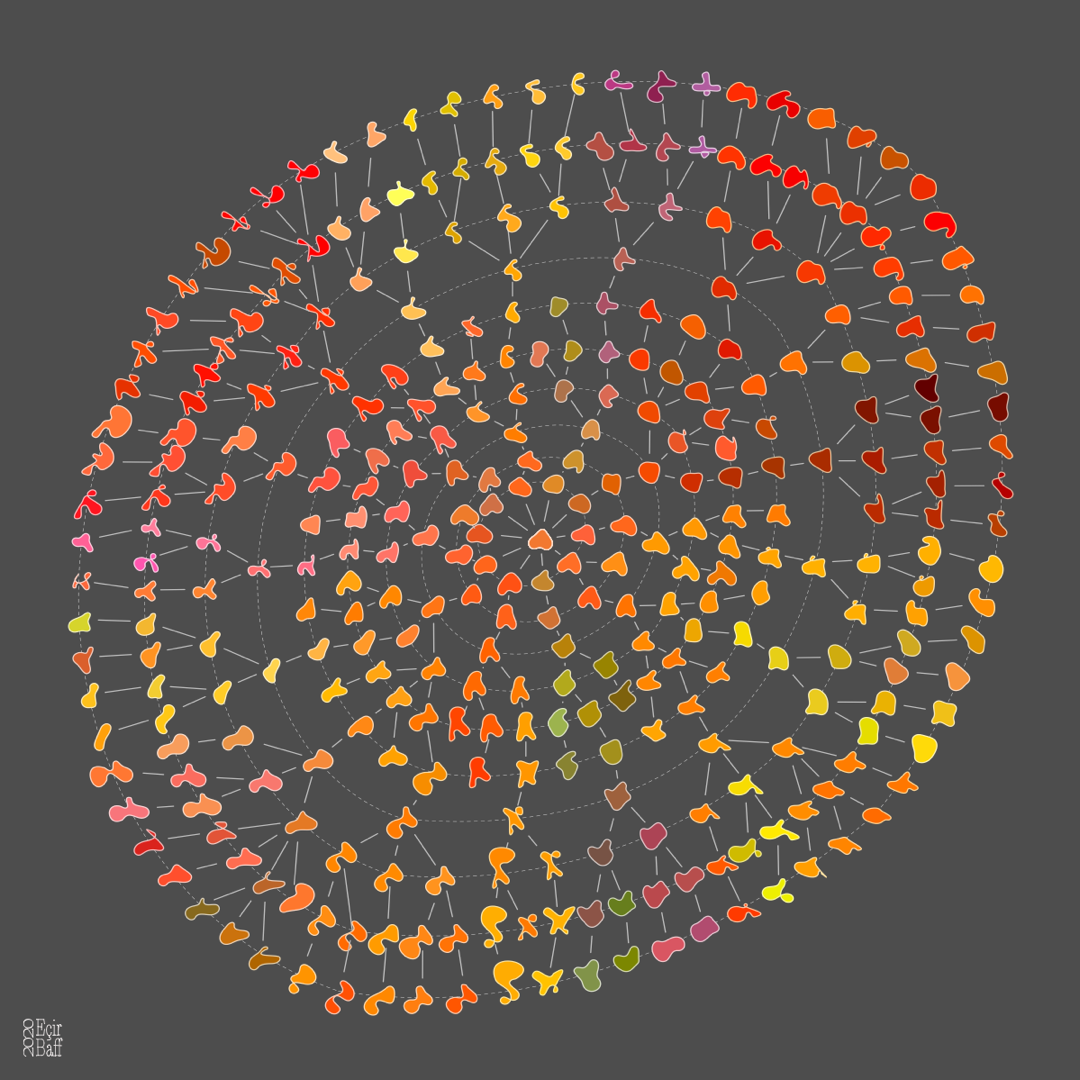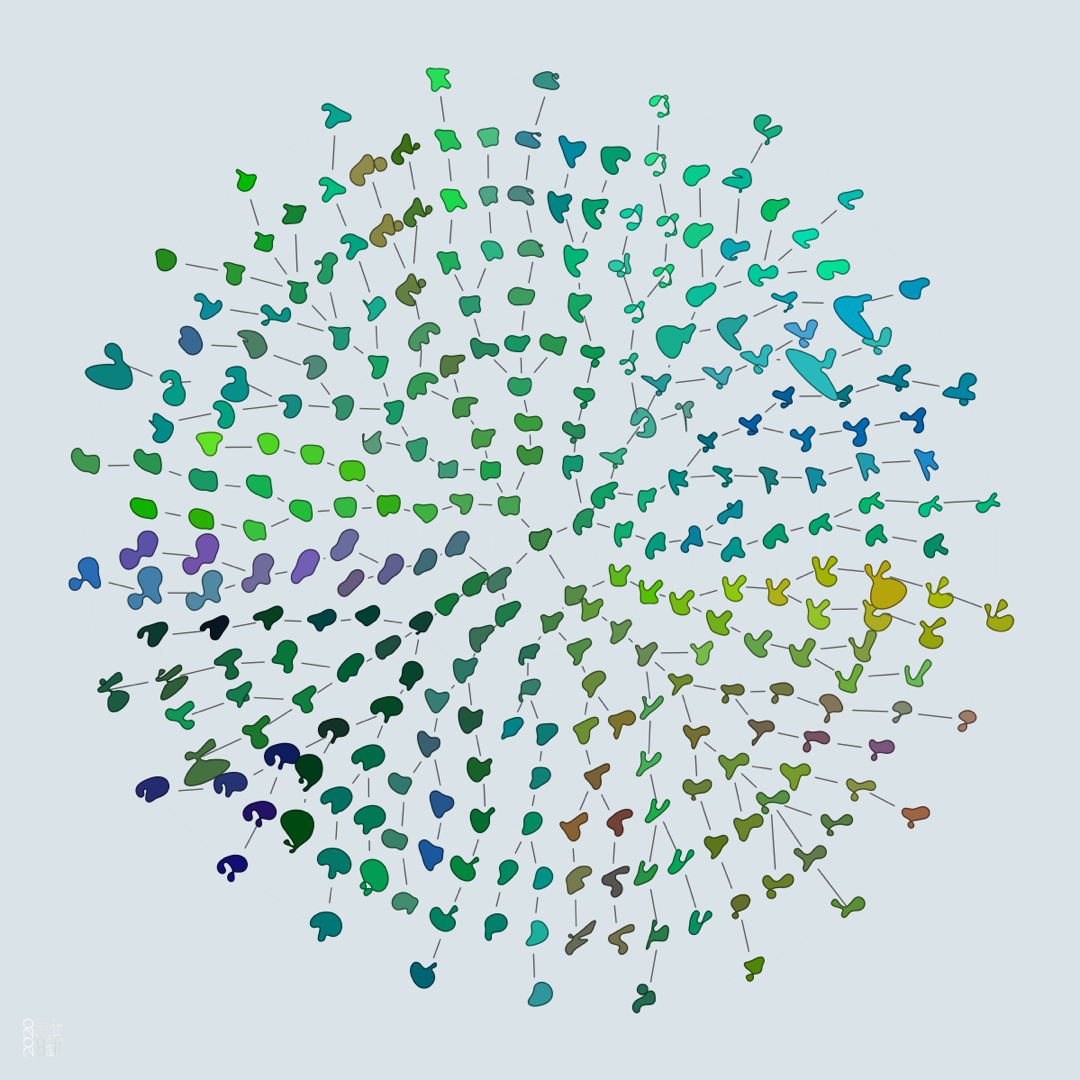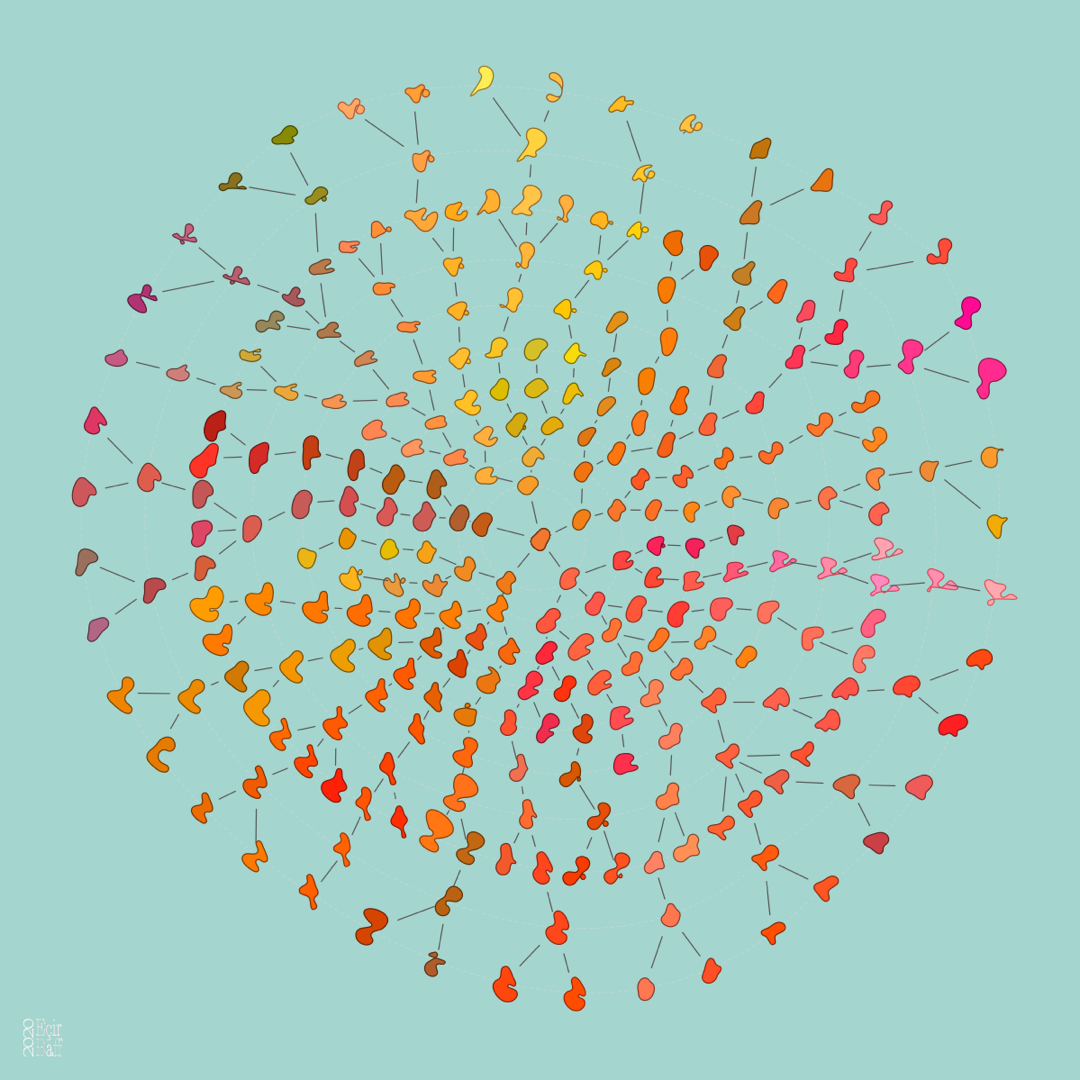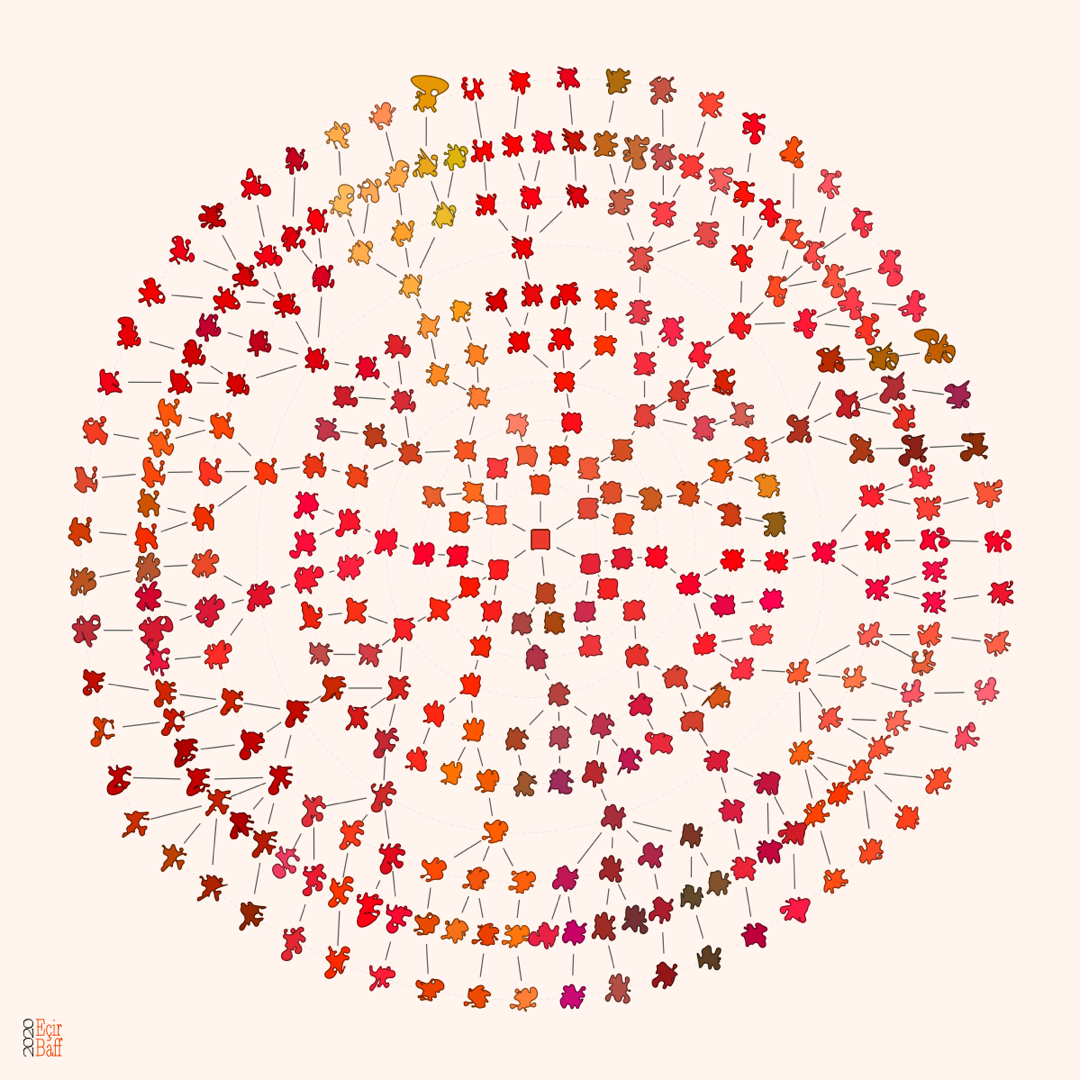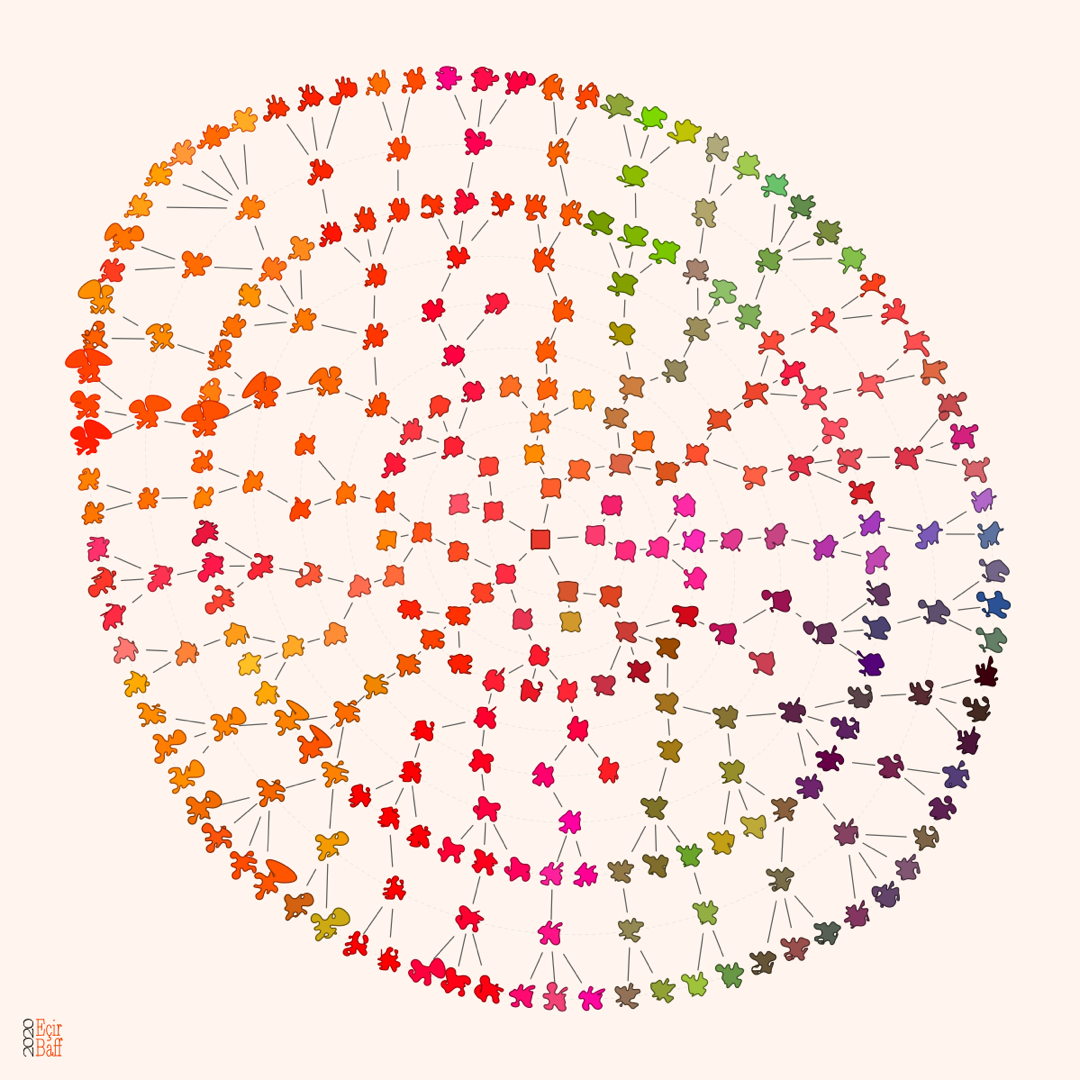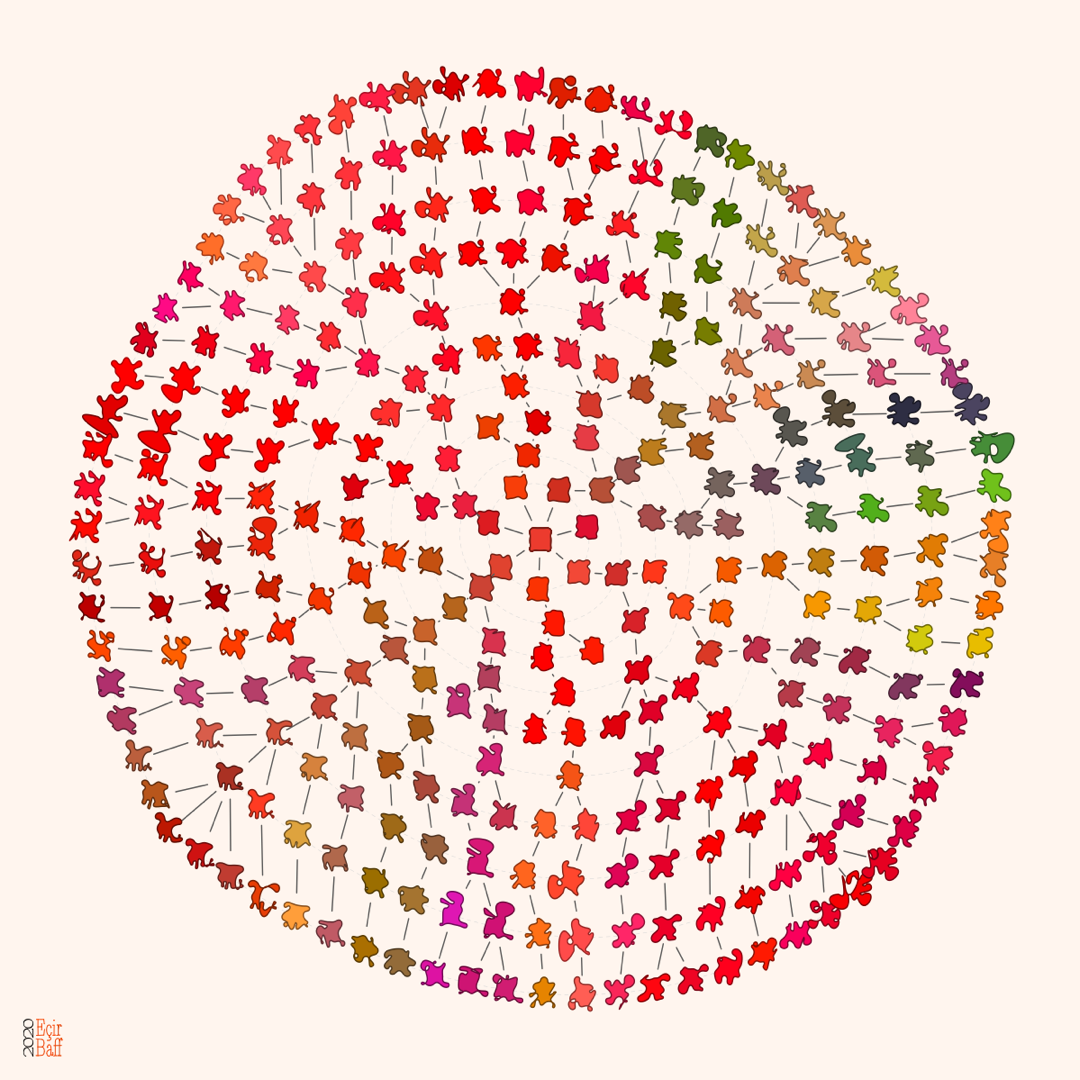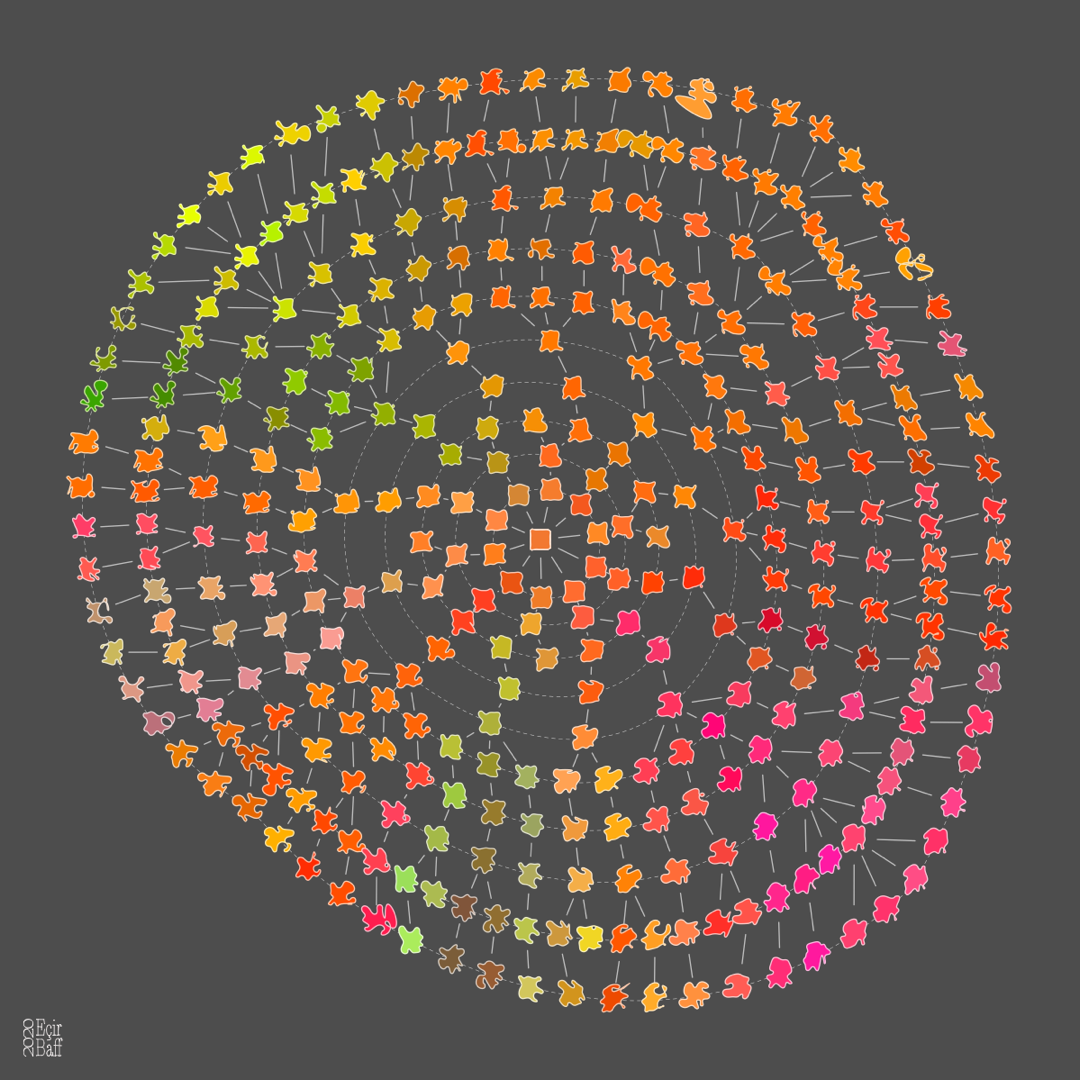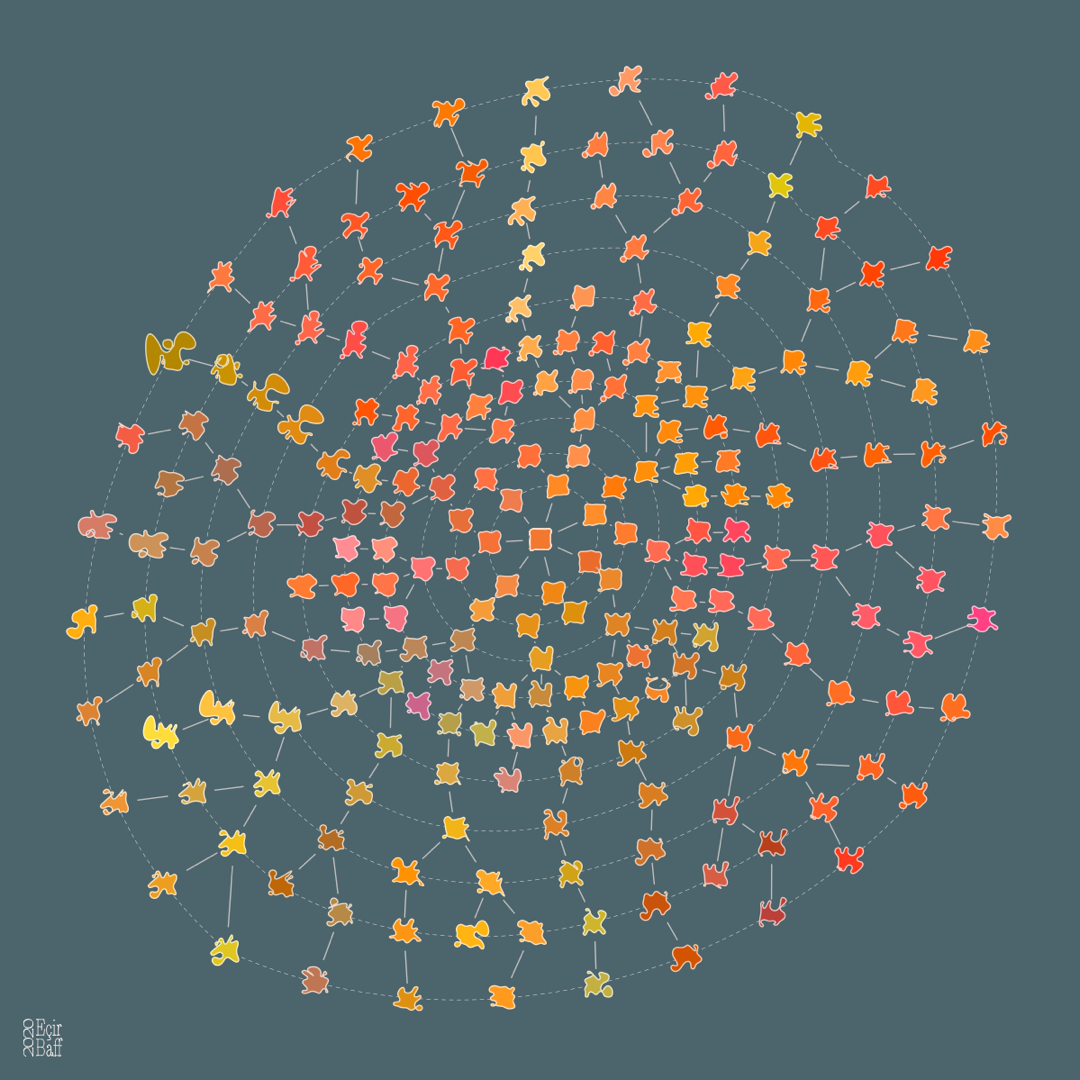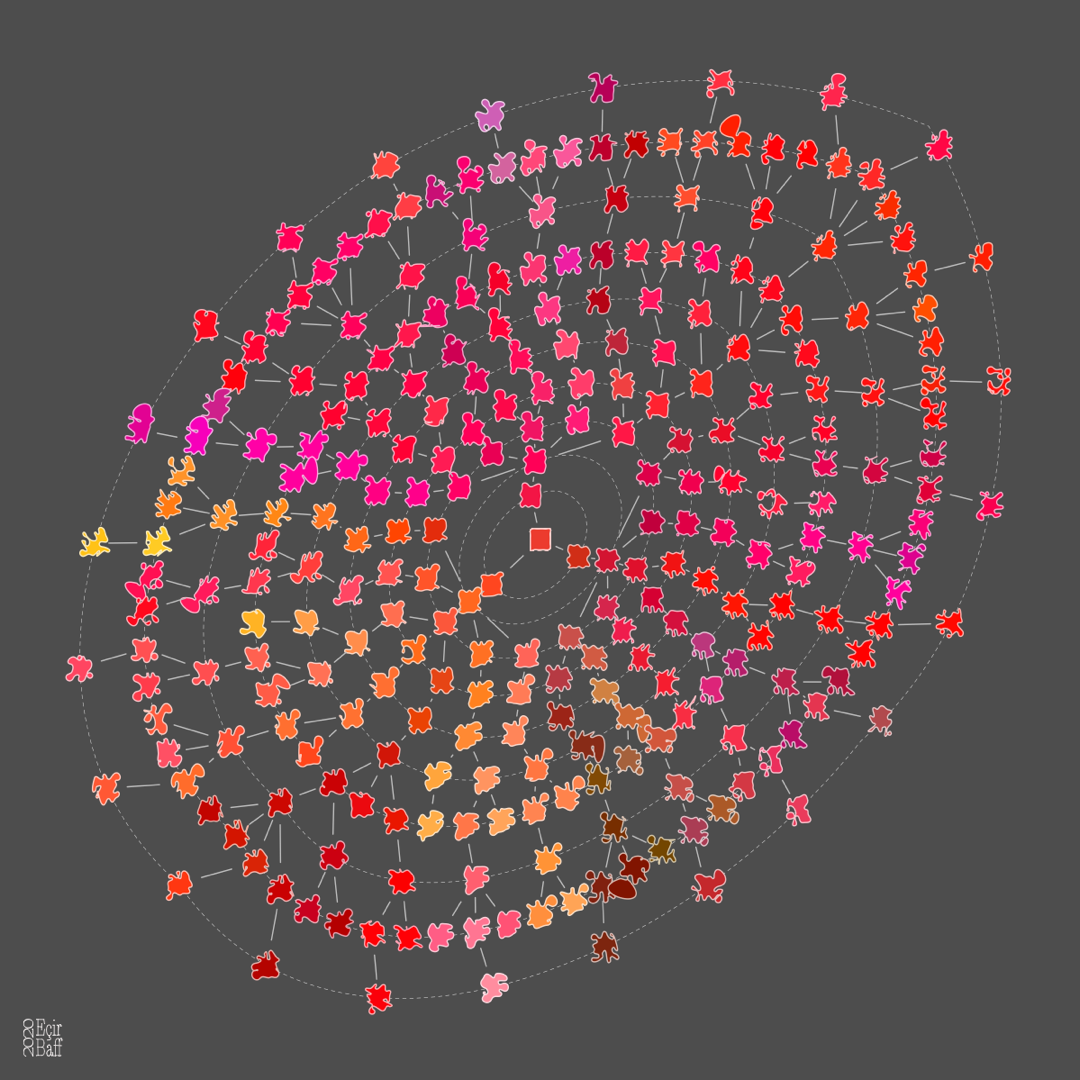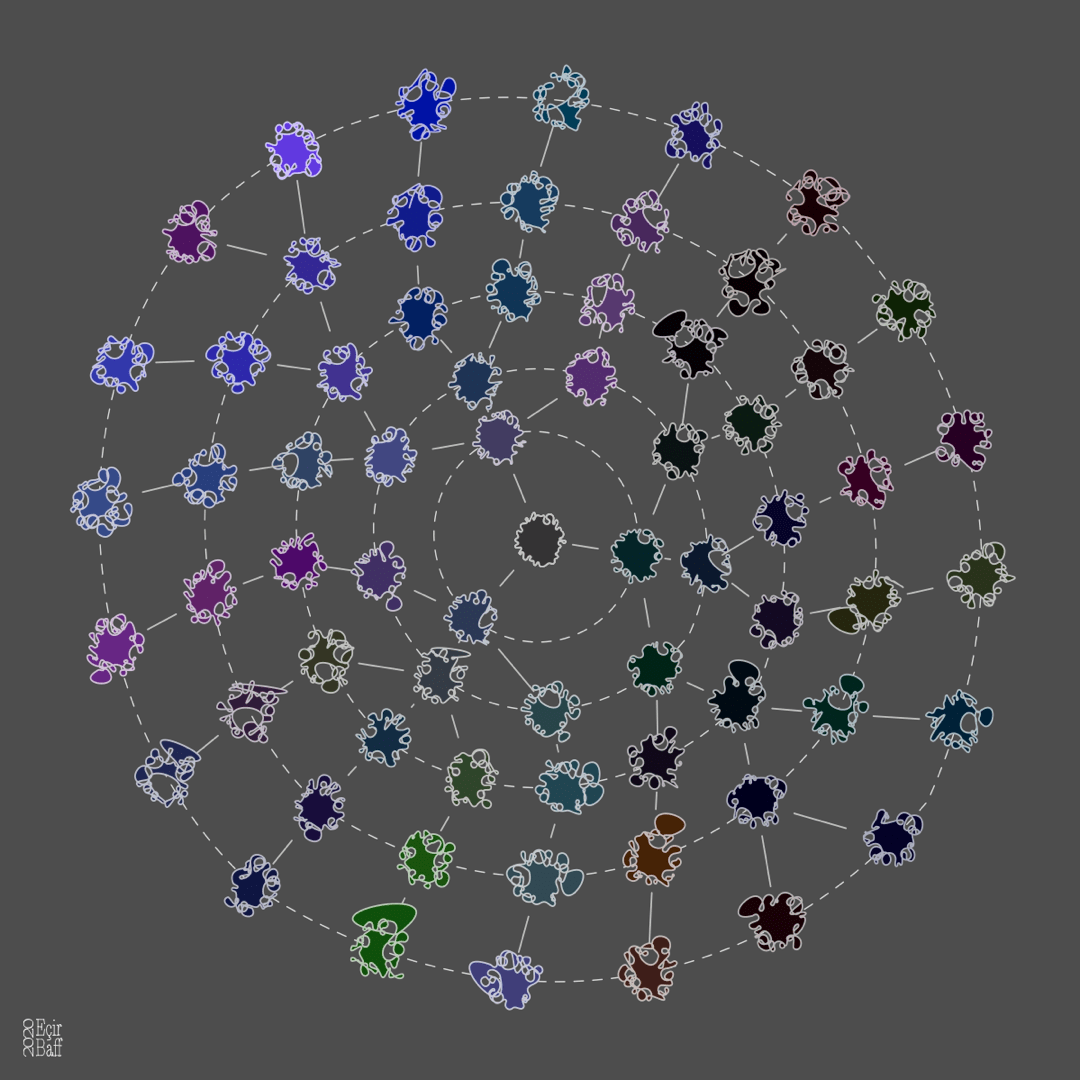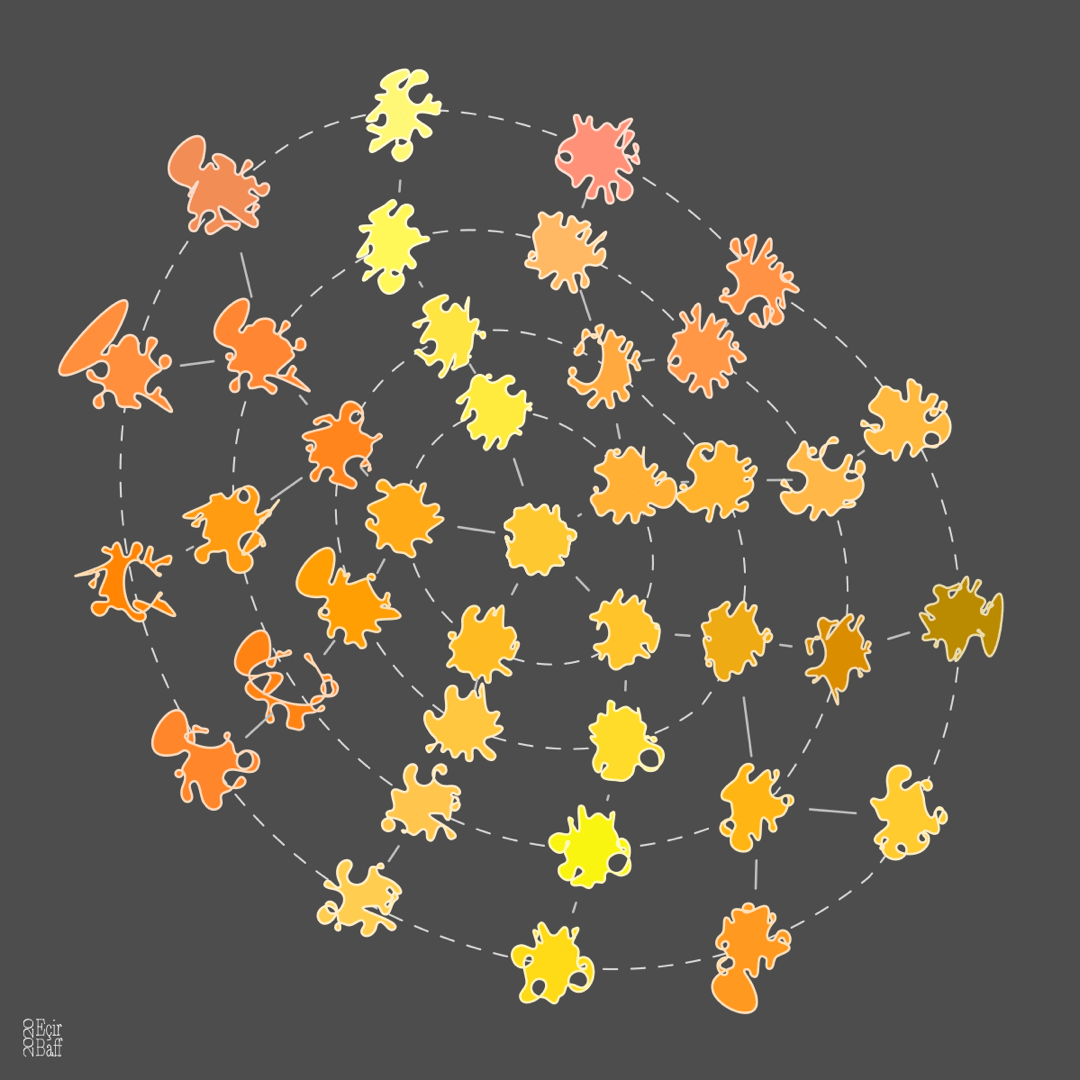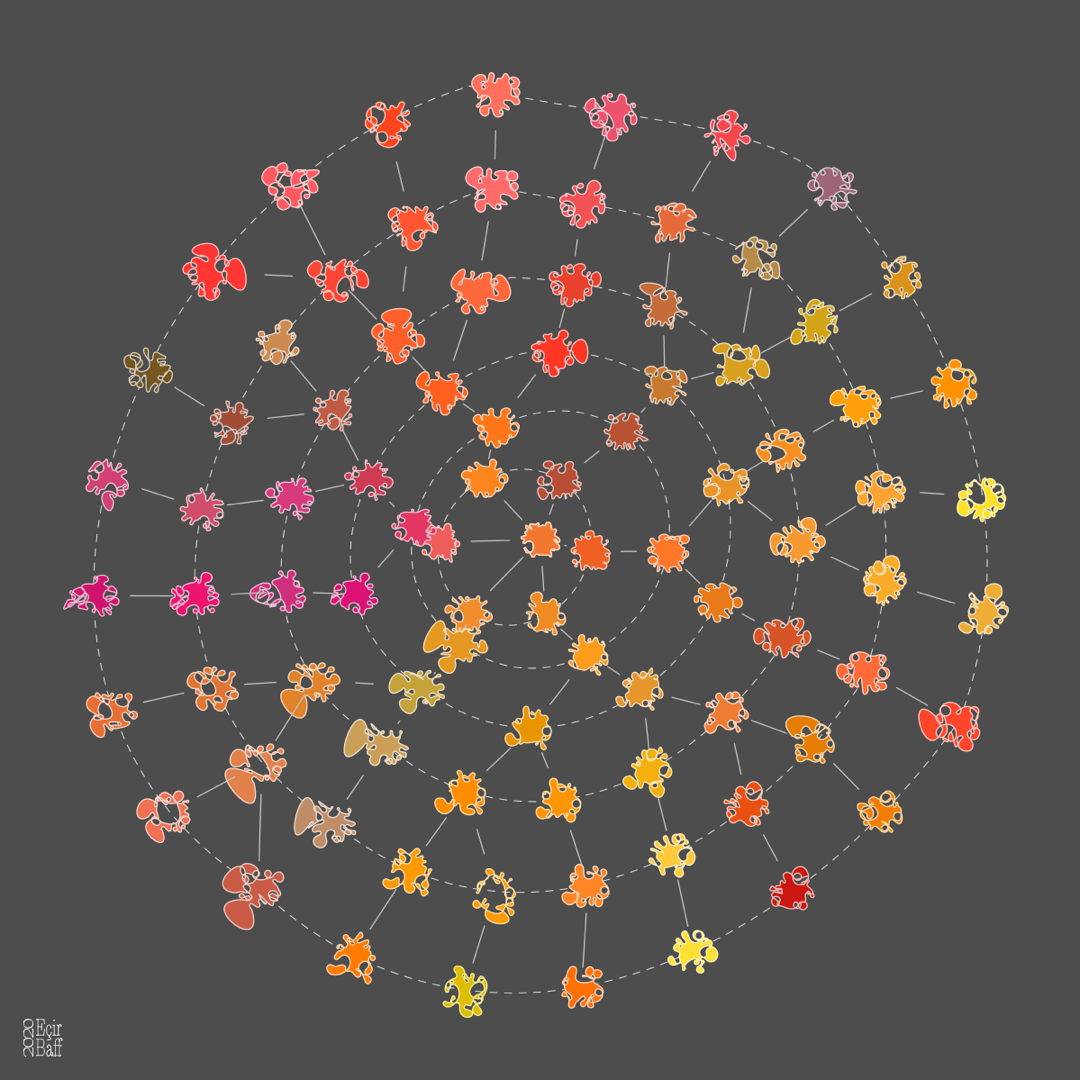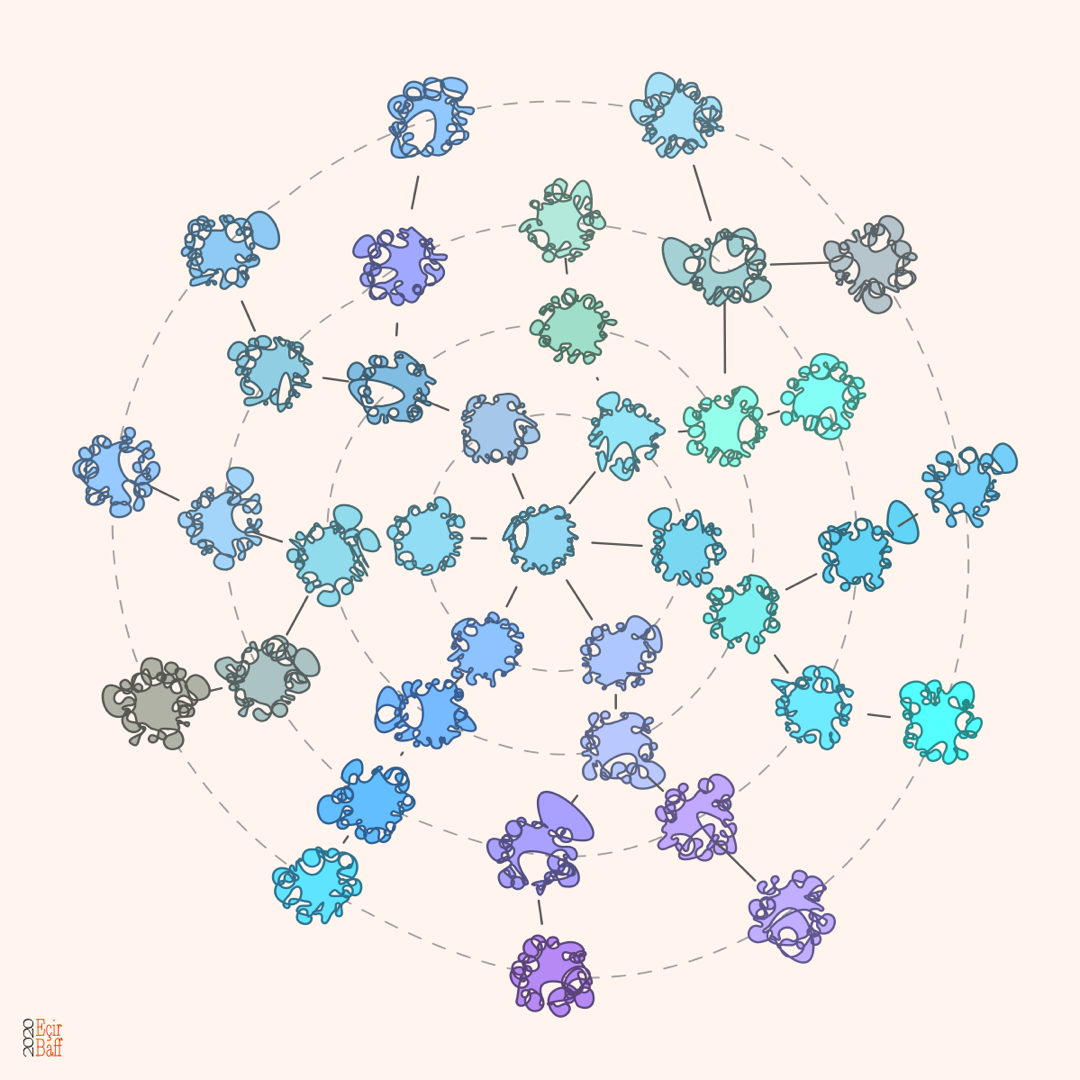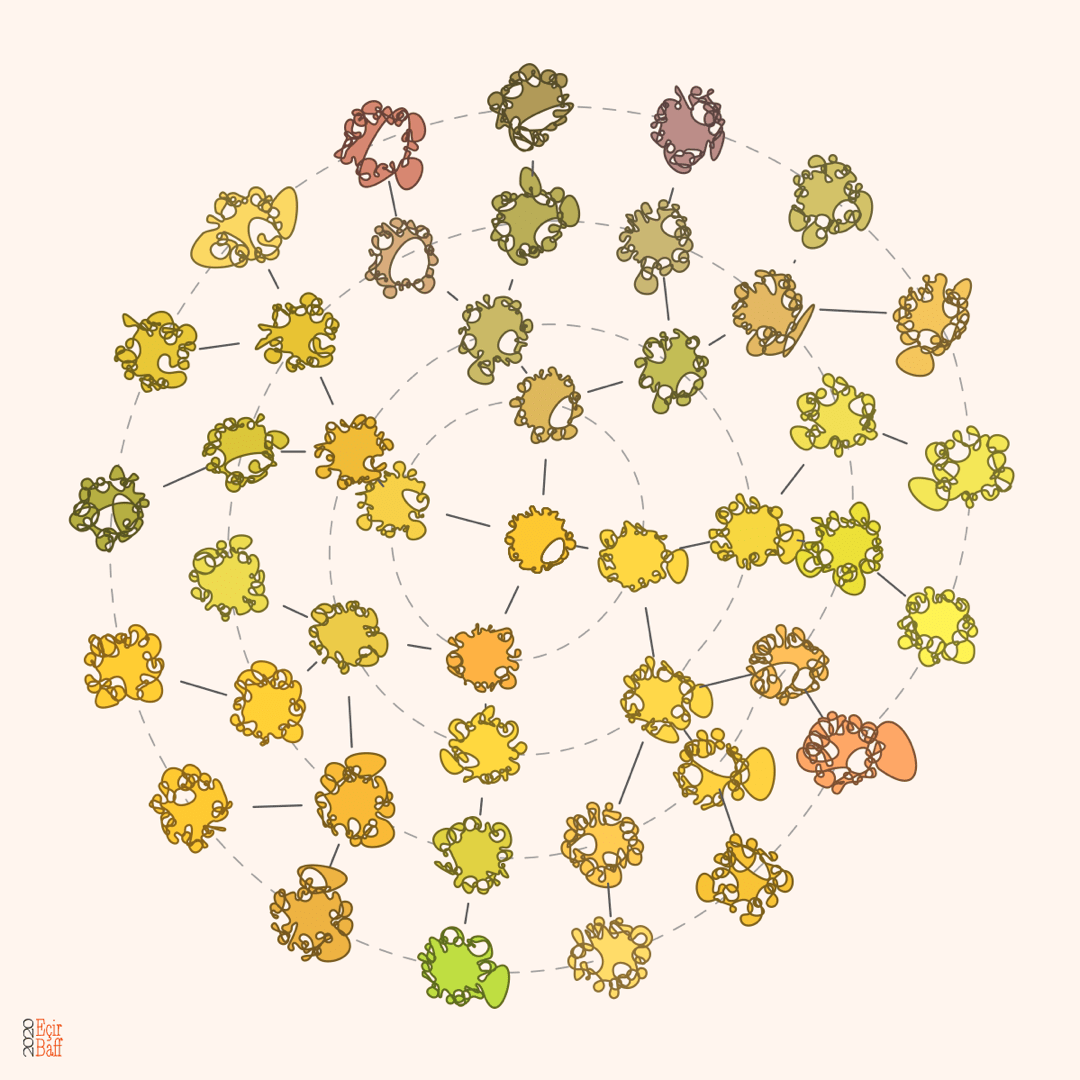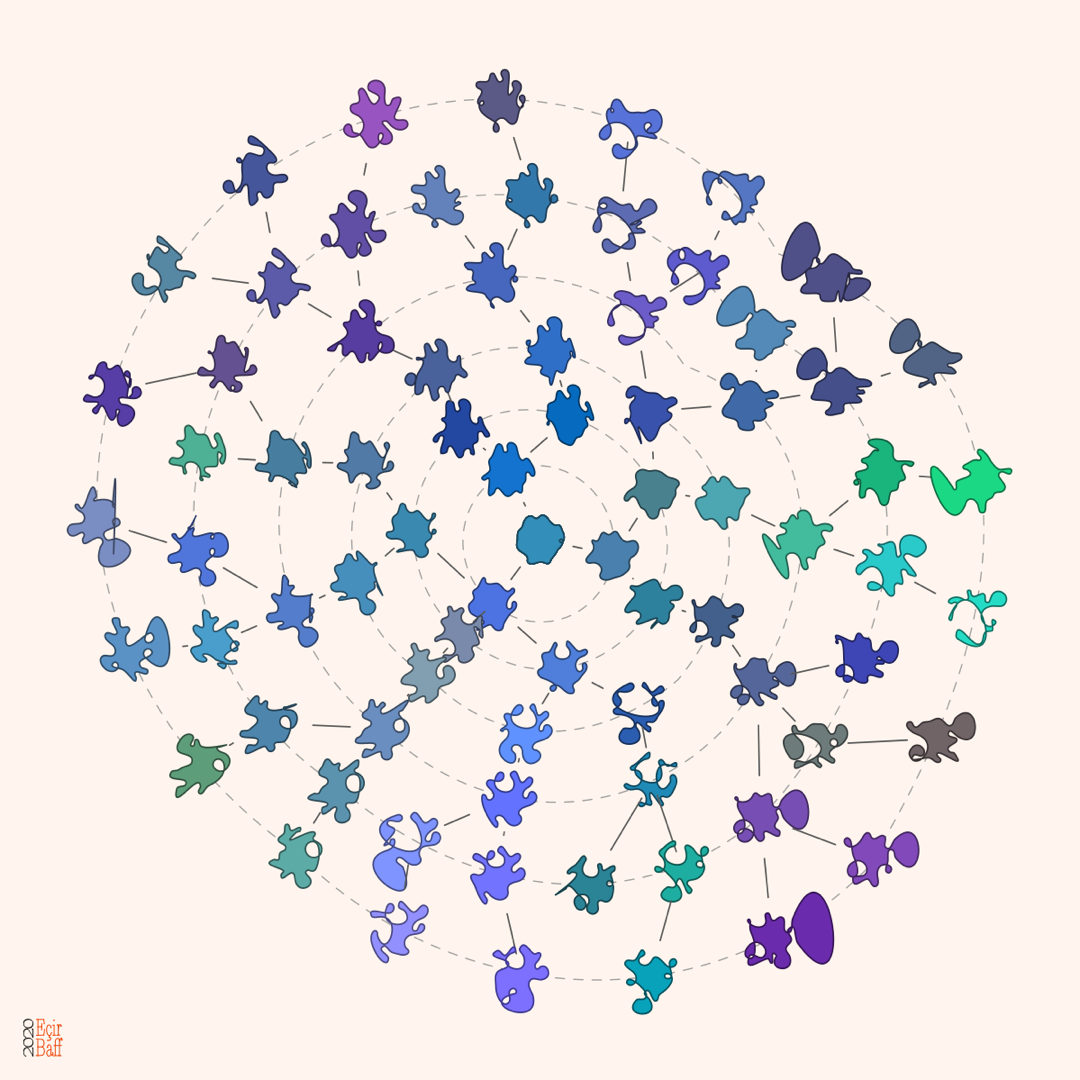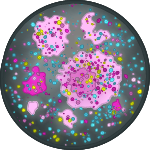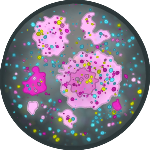• Chromosome Evolution • (2022)
The smallest circle in the center of the piece shows an initial set of a few chromosomes, the ancestors of this population. These chromosomes from this initial generation are painted in color so that we can follow their genetic material through time. The second generation (the second circle) is formed by taking one or two parental chromosomes from the initial population; one parent in the case where the chromosome is transmitted without recombination, two parents in the case of recombination. Mutations are possibly added to this transmission (a genetic marker changes color compared to its parent). Two models of evolution are used here: (1) the parents are chosen according to the position in space of the parents; (2) the parents are chosen randomly from the previous generation. The following generations are build in the same way, one at a time, always from he previous generation. This model of evolution is a version of the Wrigth-Fisher model, with mutation and recombination.

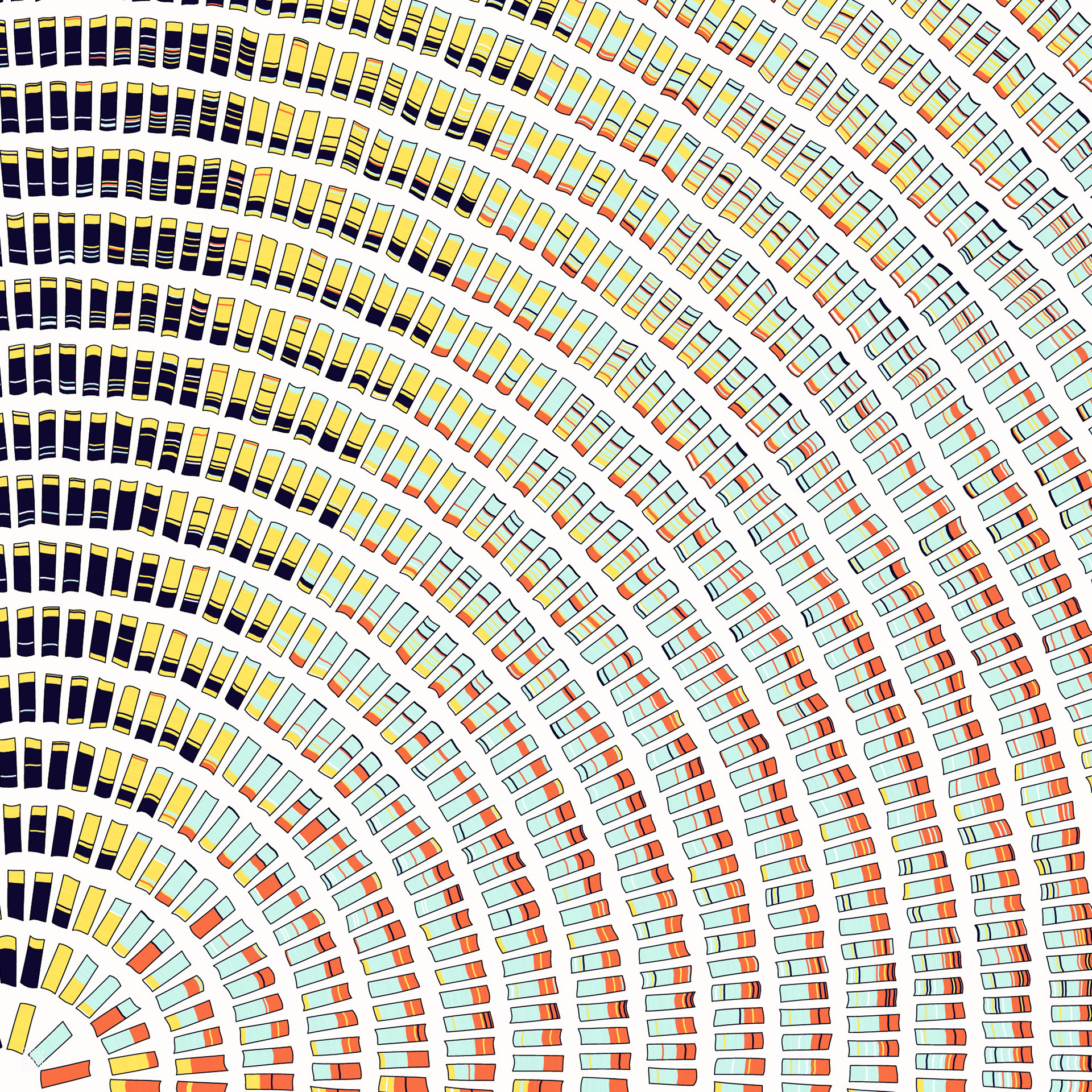

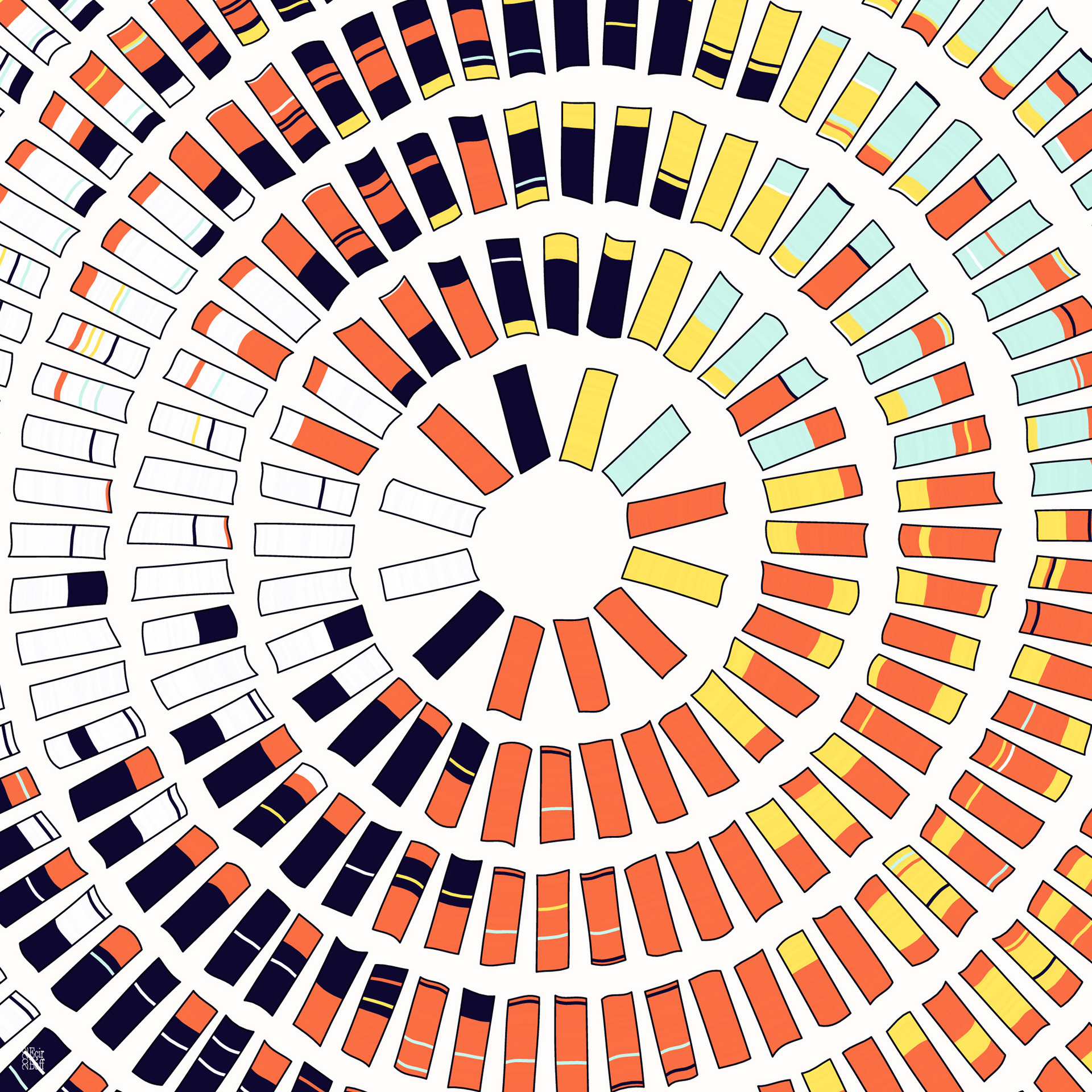
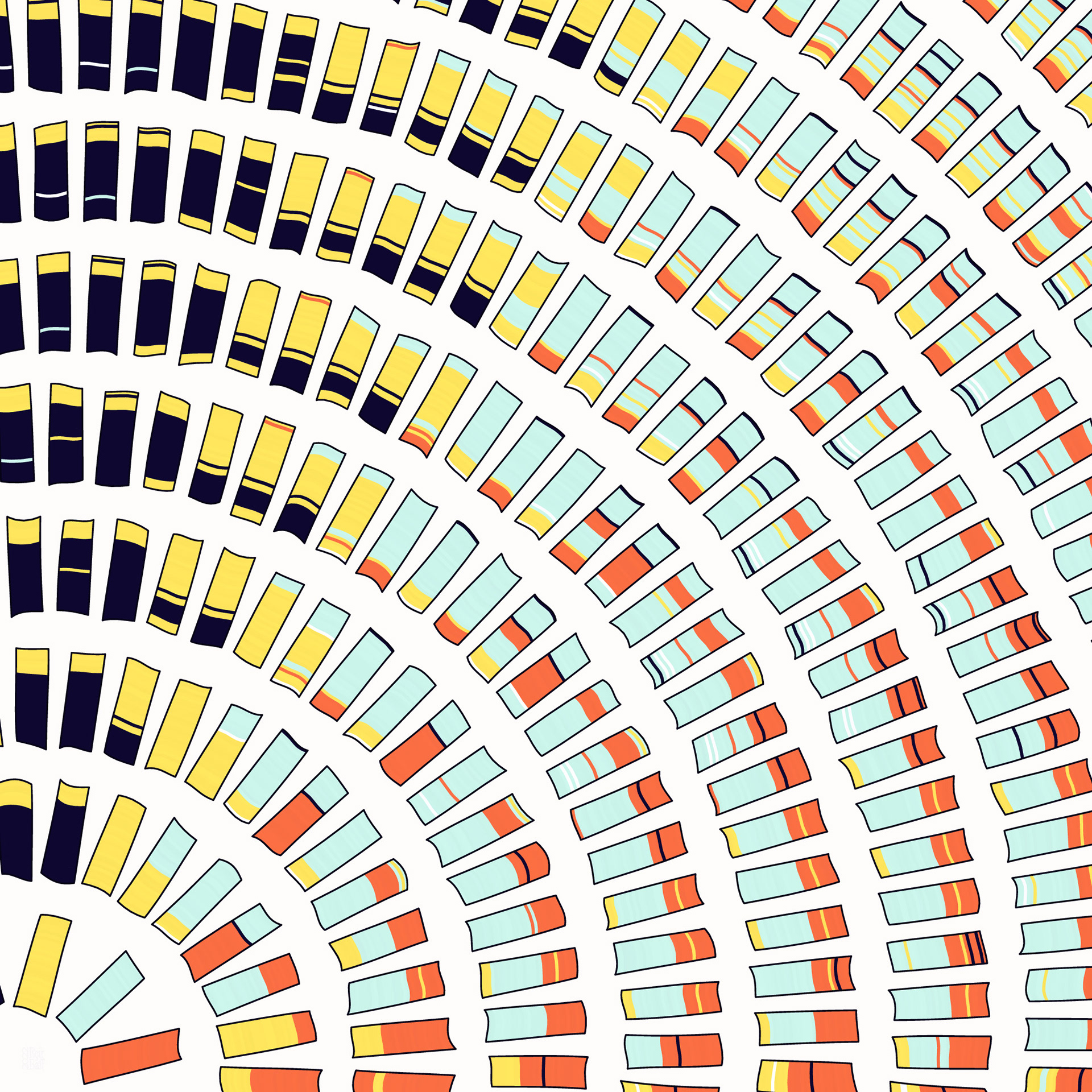

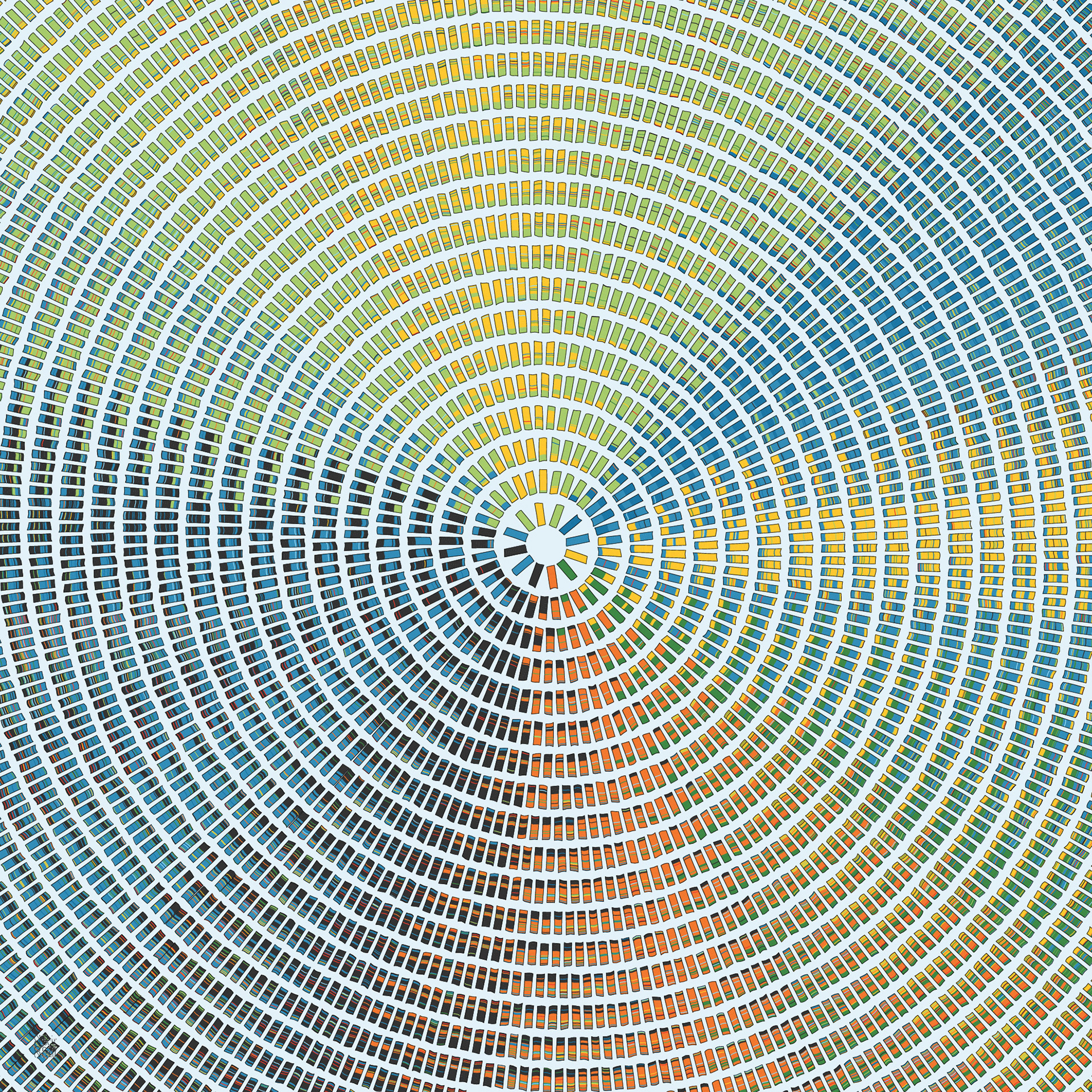
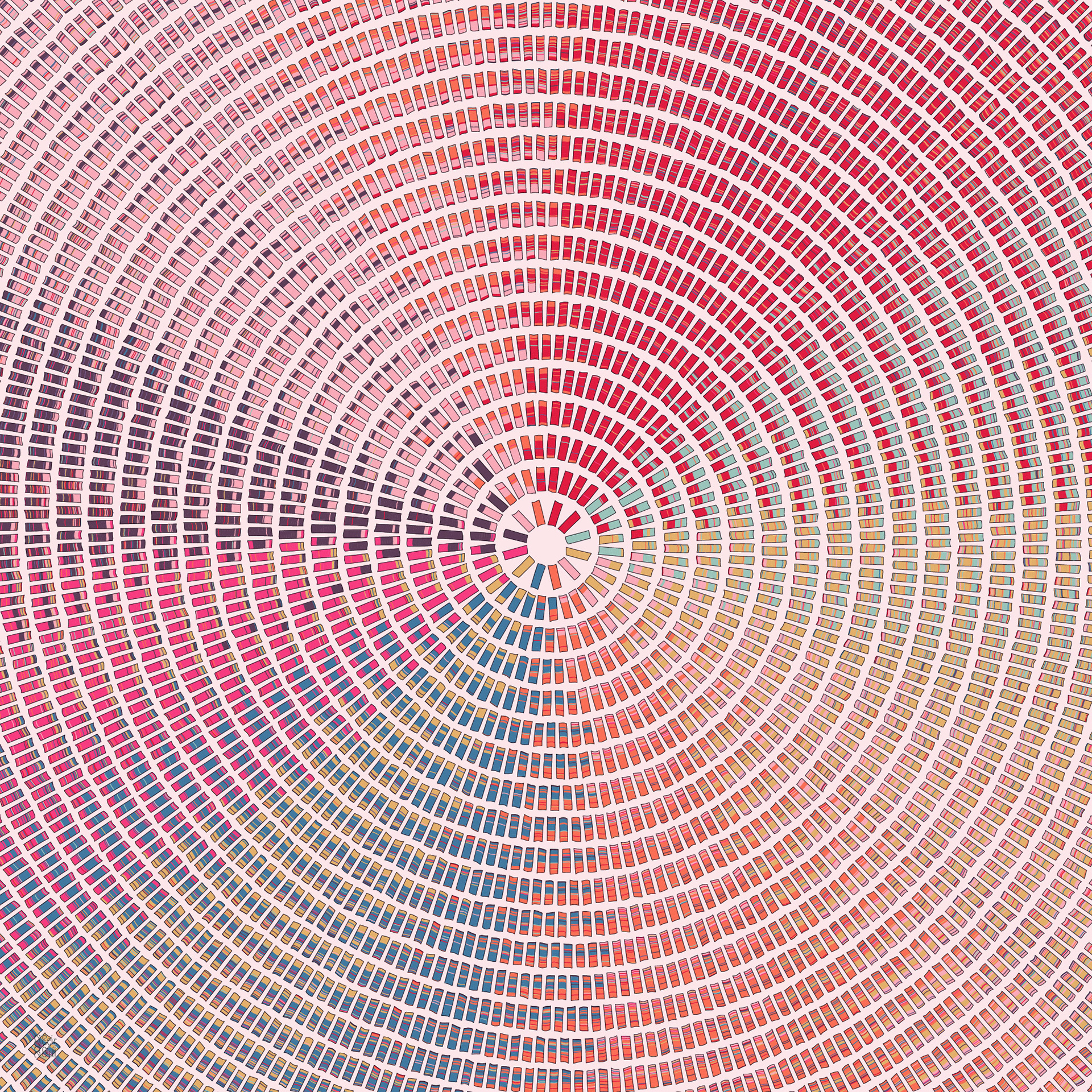
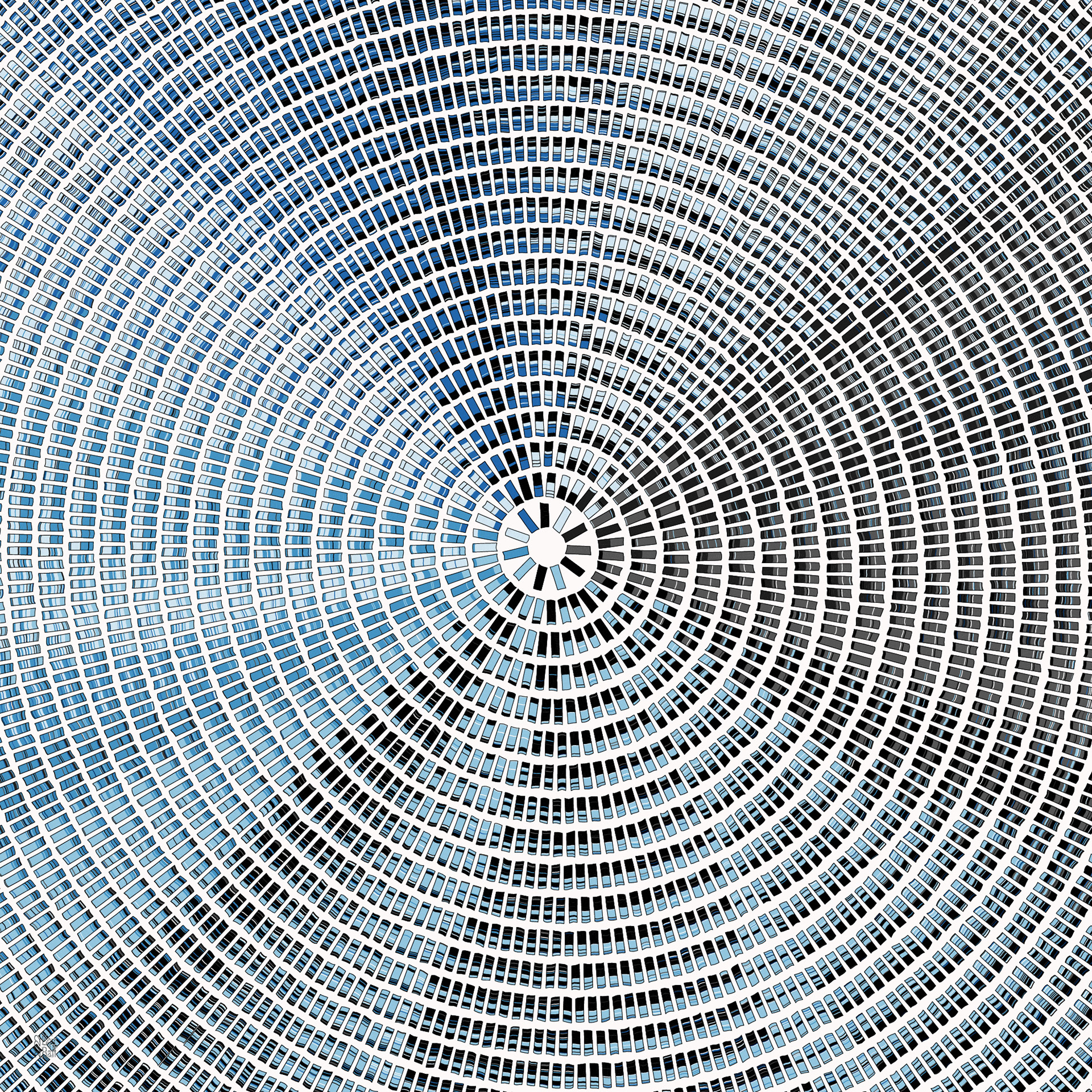
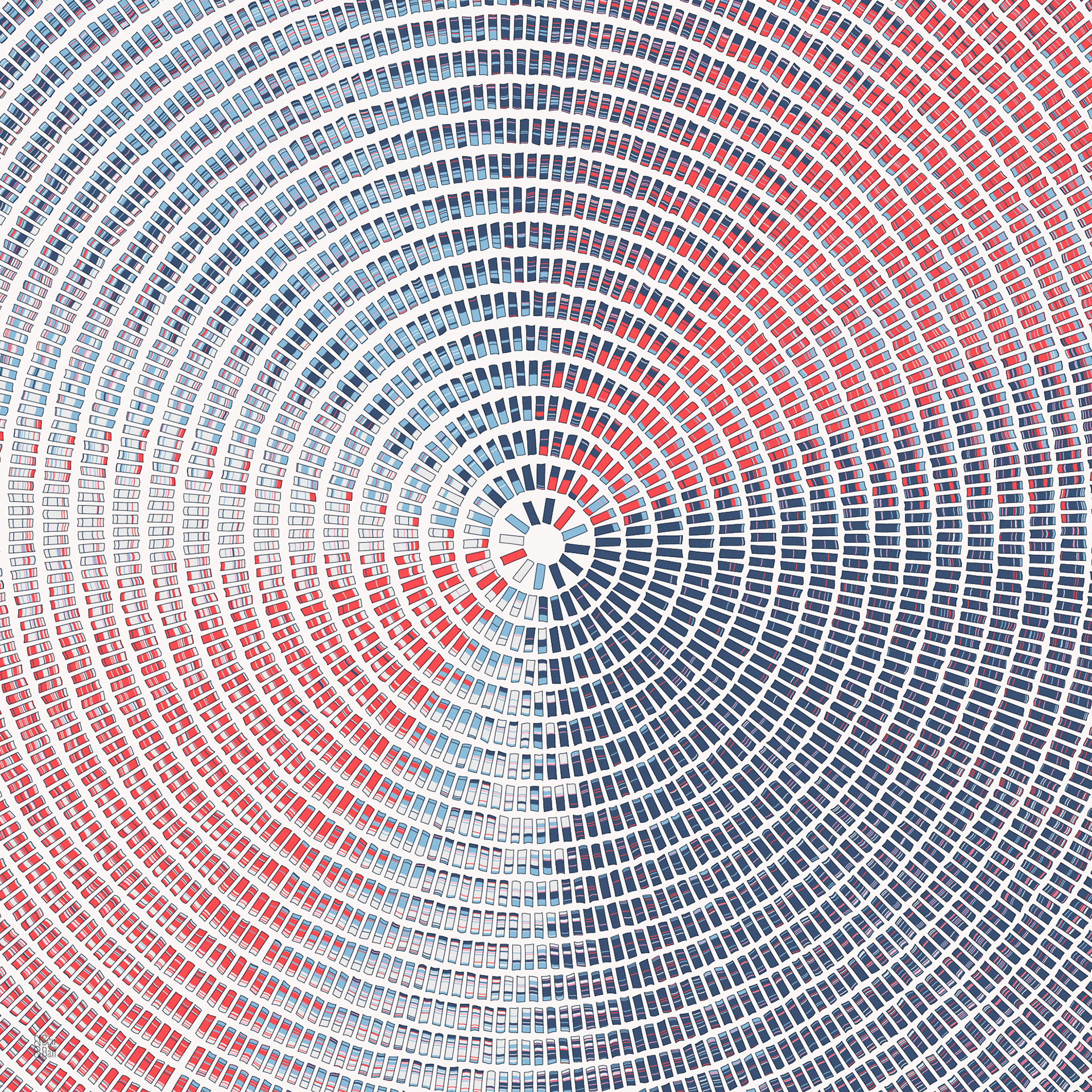
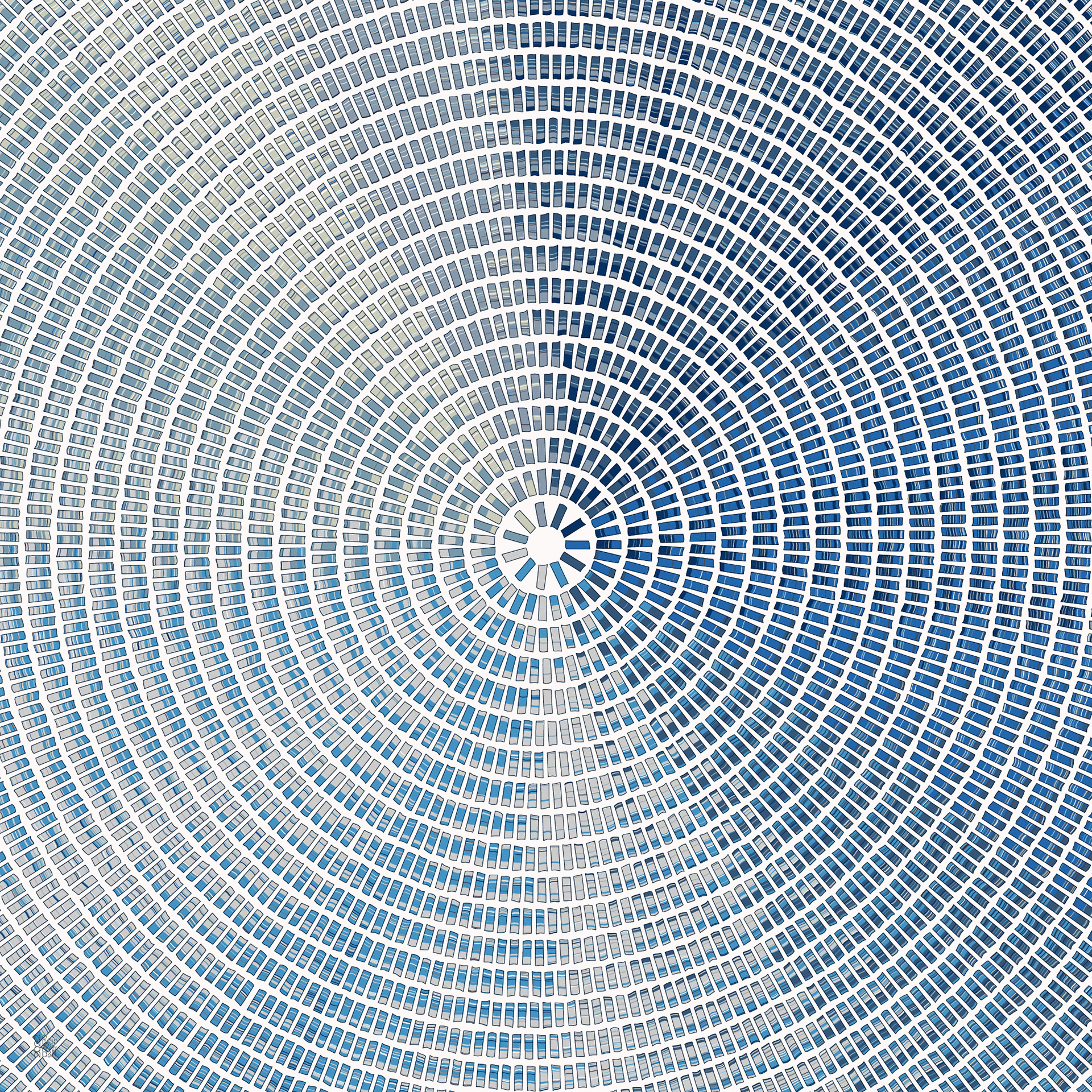
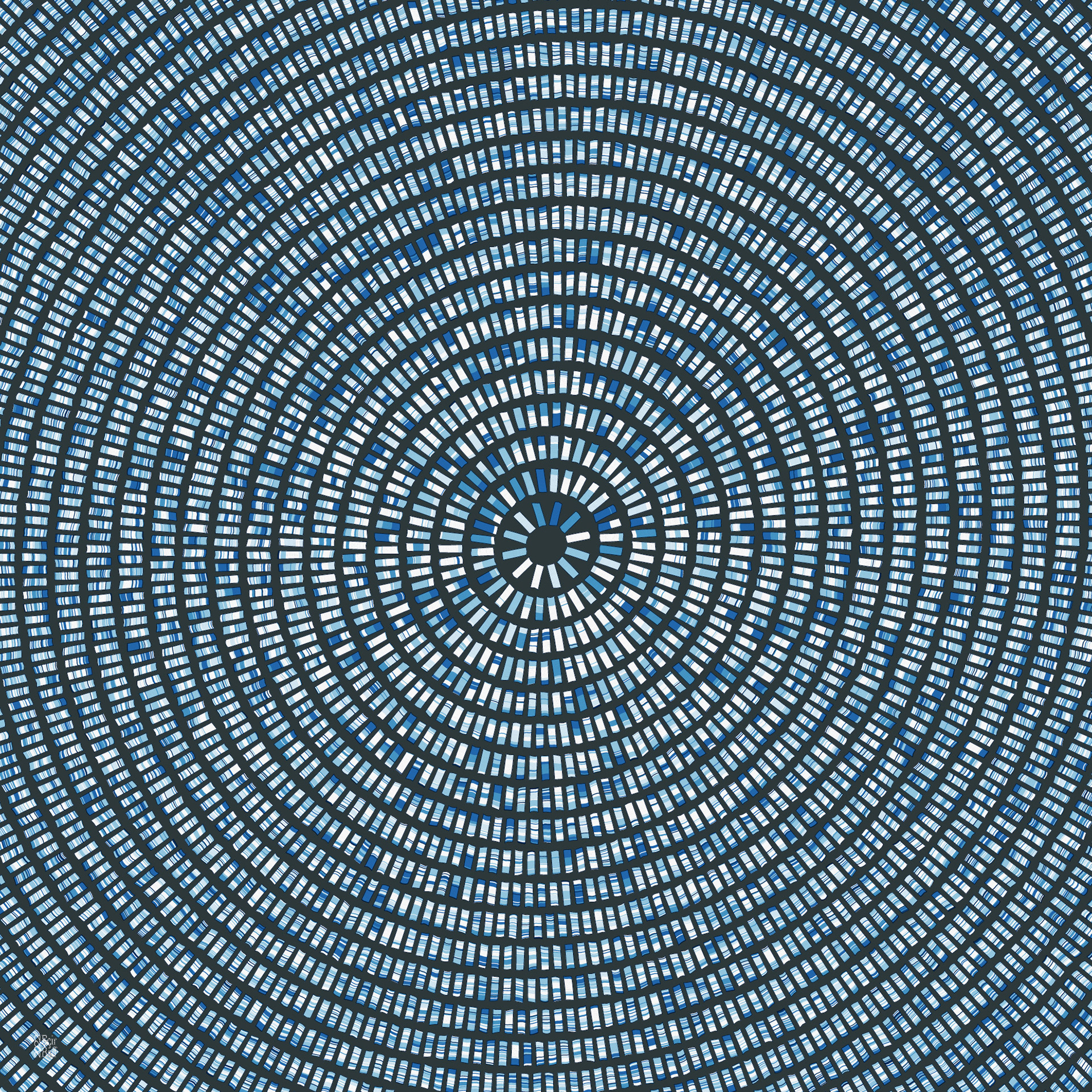


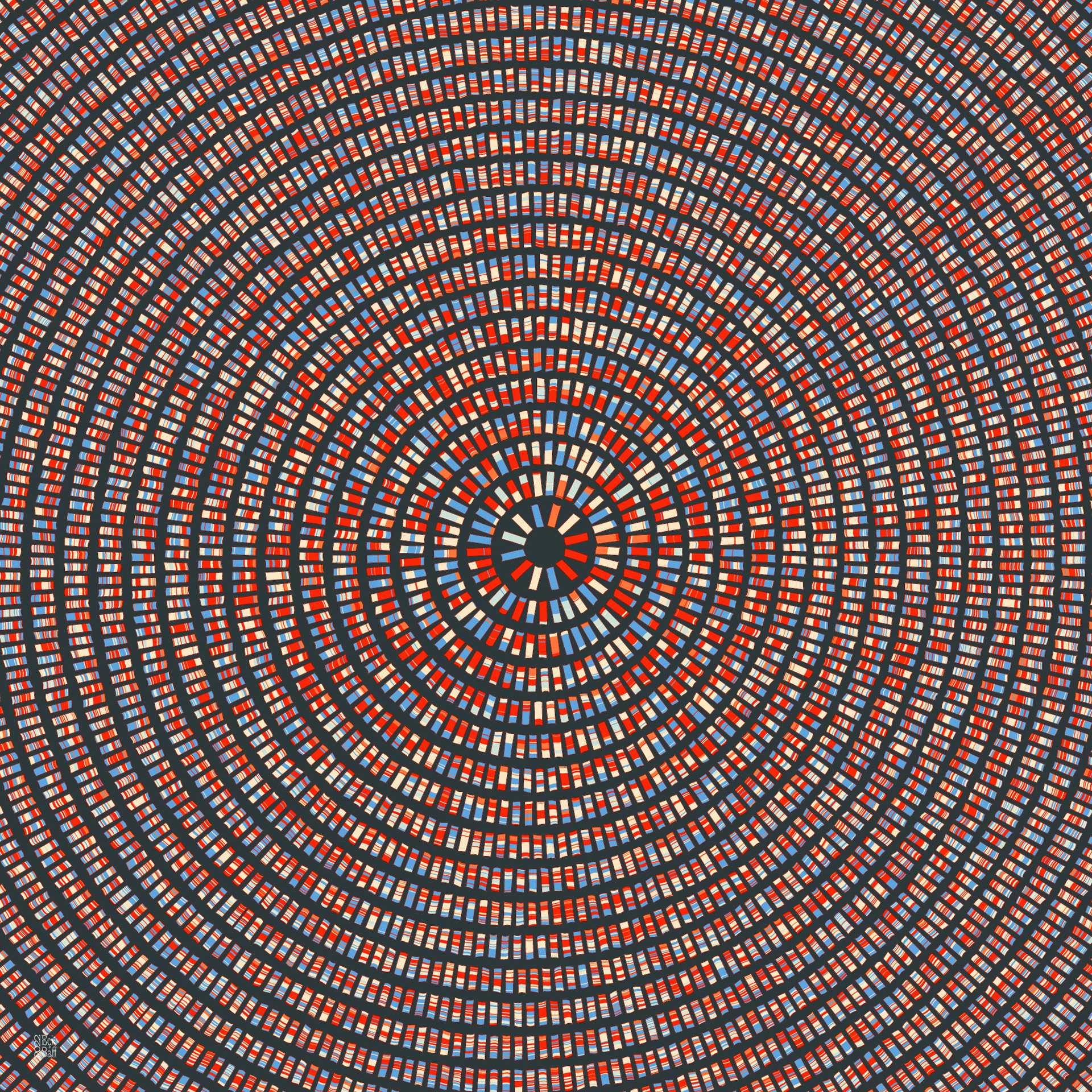



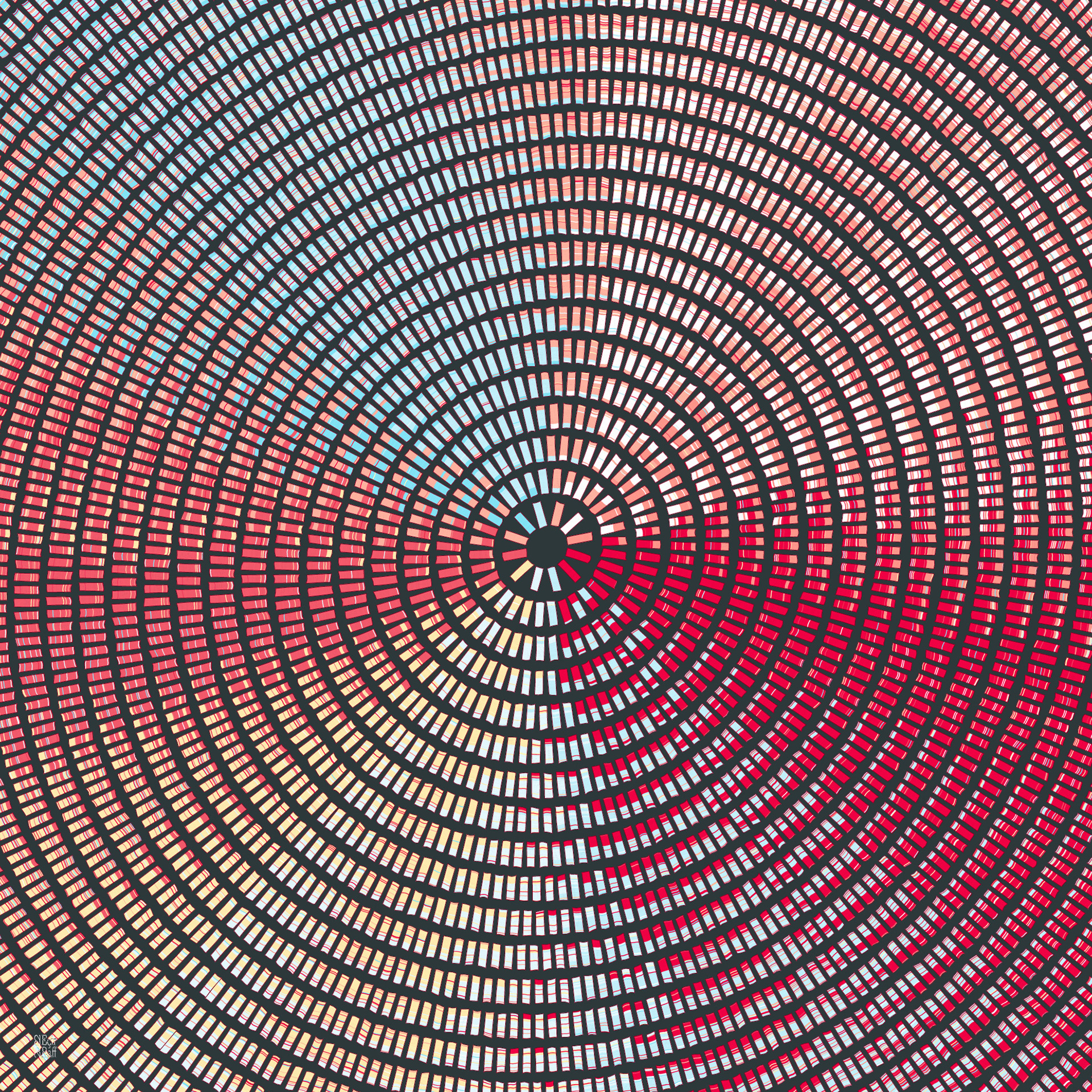
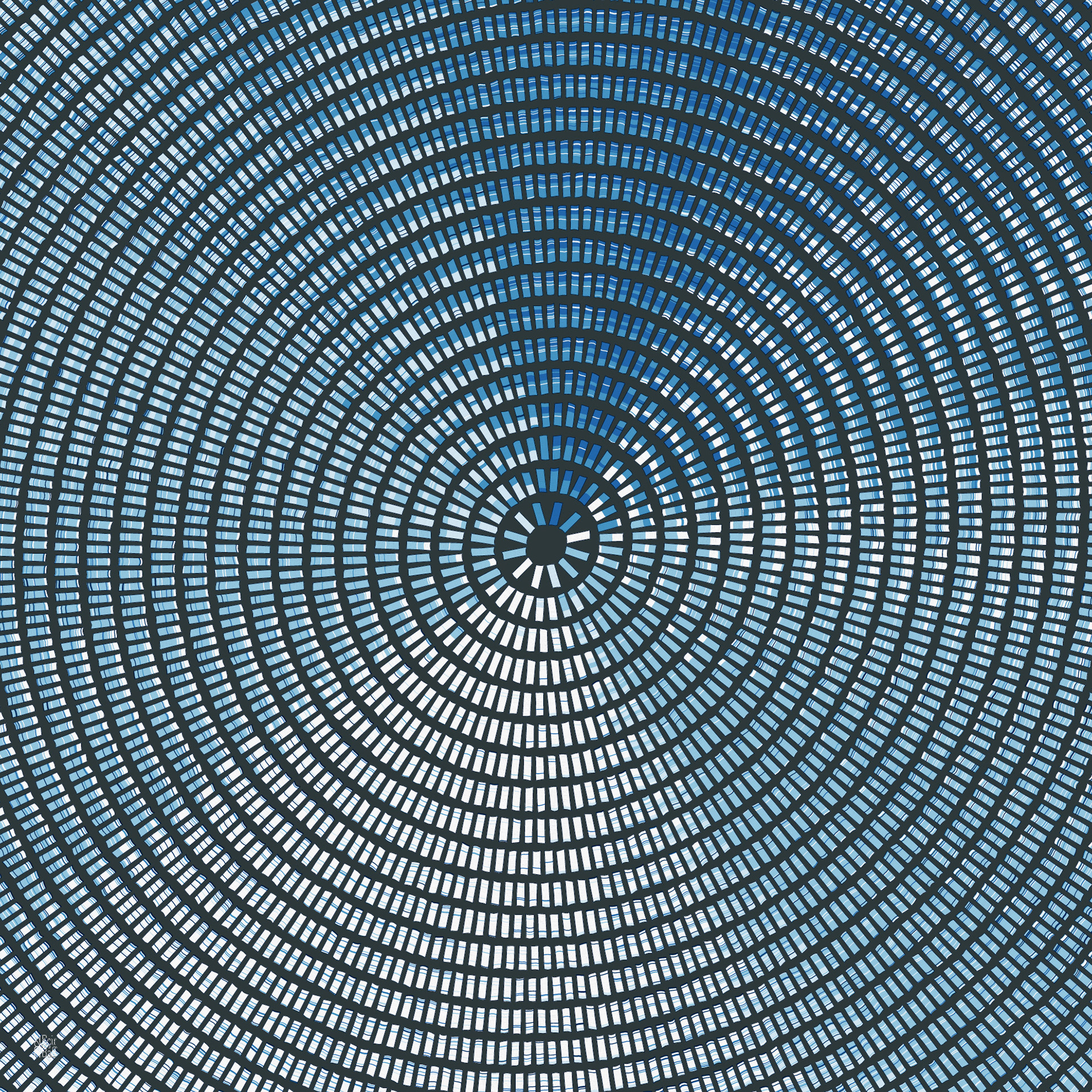

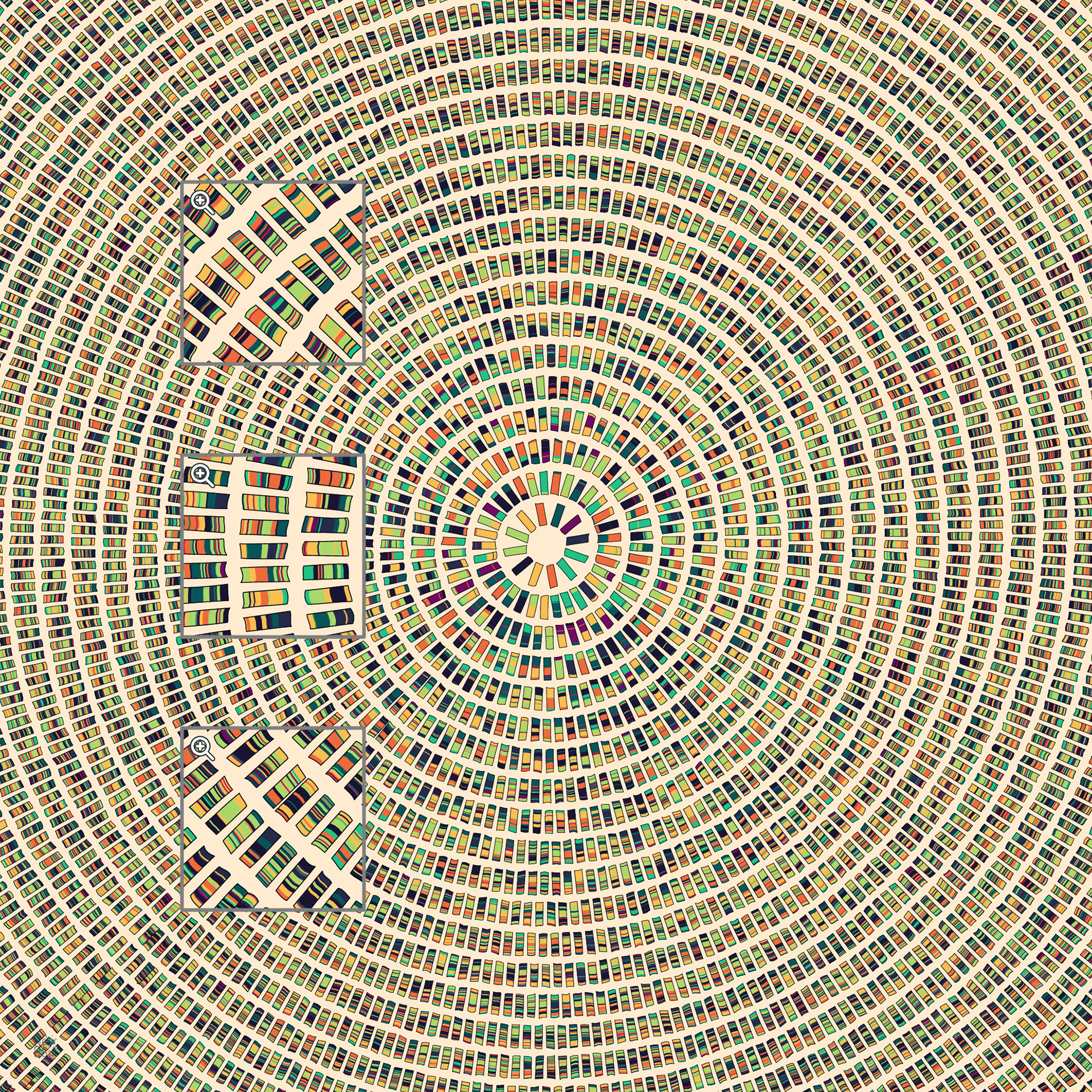
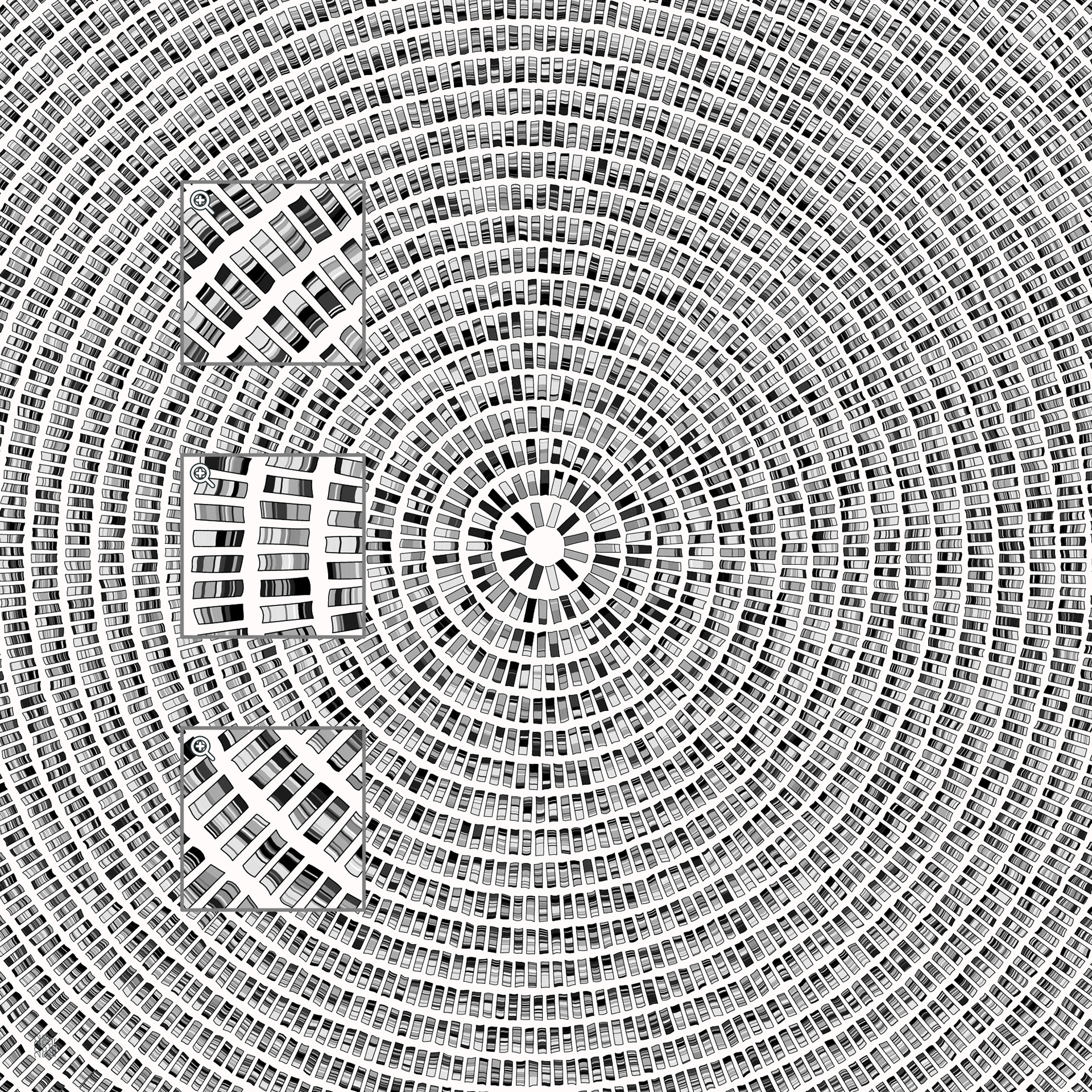


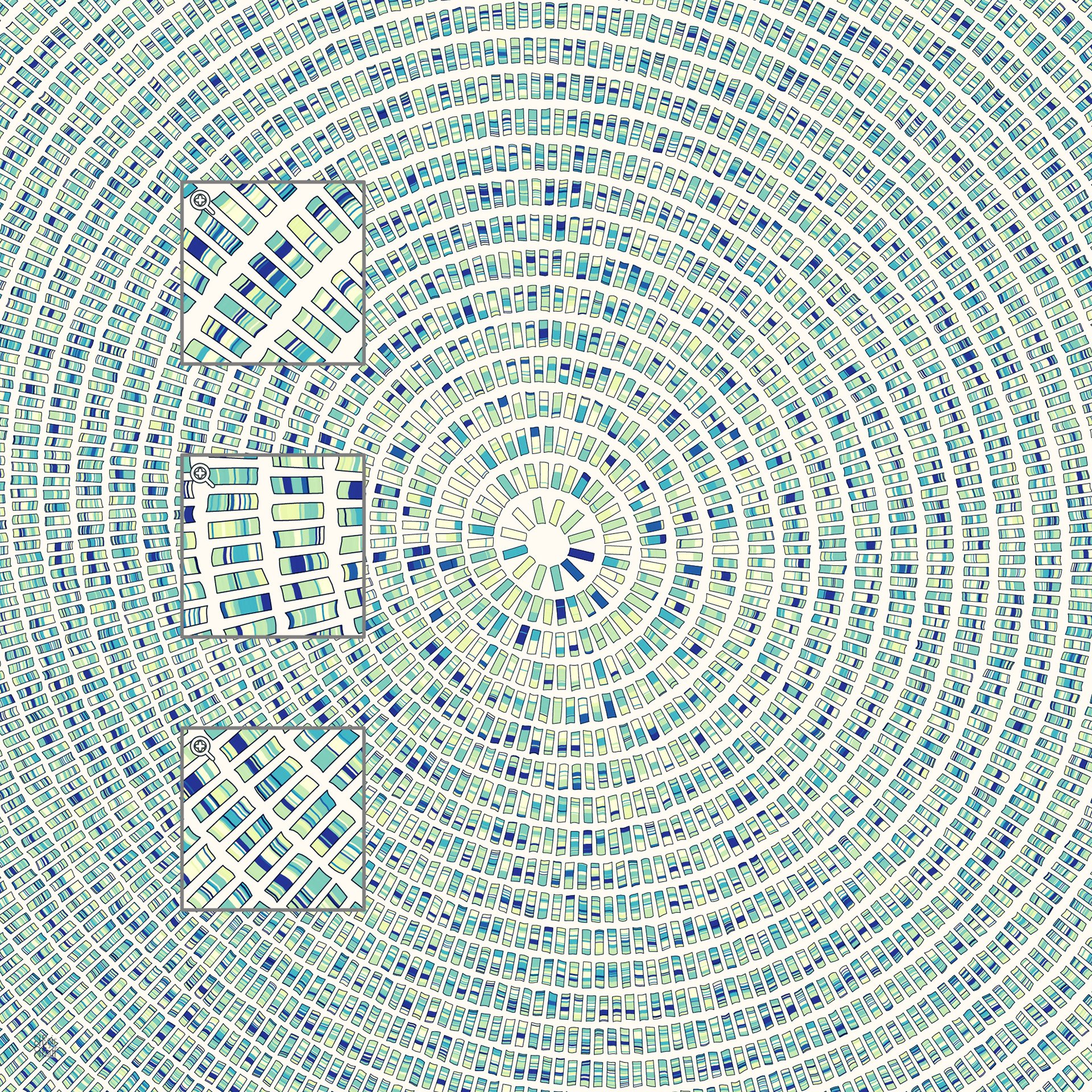
• Chromosome Evolution • (2019)
Schematic representation of chromosomes evolution. Each ligne is a generation, and each rectangle a chromosome. In the following figure, we are following the evolution of 20 chromosomes (in line) on 8 generations; evolution is going from top, the past, to the bottom (present). Each child chromosome is made by choosing a parental chromosome from the preceding generation (here the line above). In the reproduction process, mutations cause small local changes in the DNA. Here, these phenomenons are amplified for artistic purposes, but illustrate well what occurs in reality. This model is an haploid model of evolution.
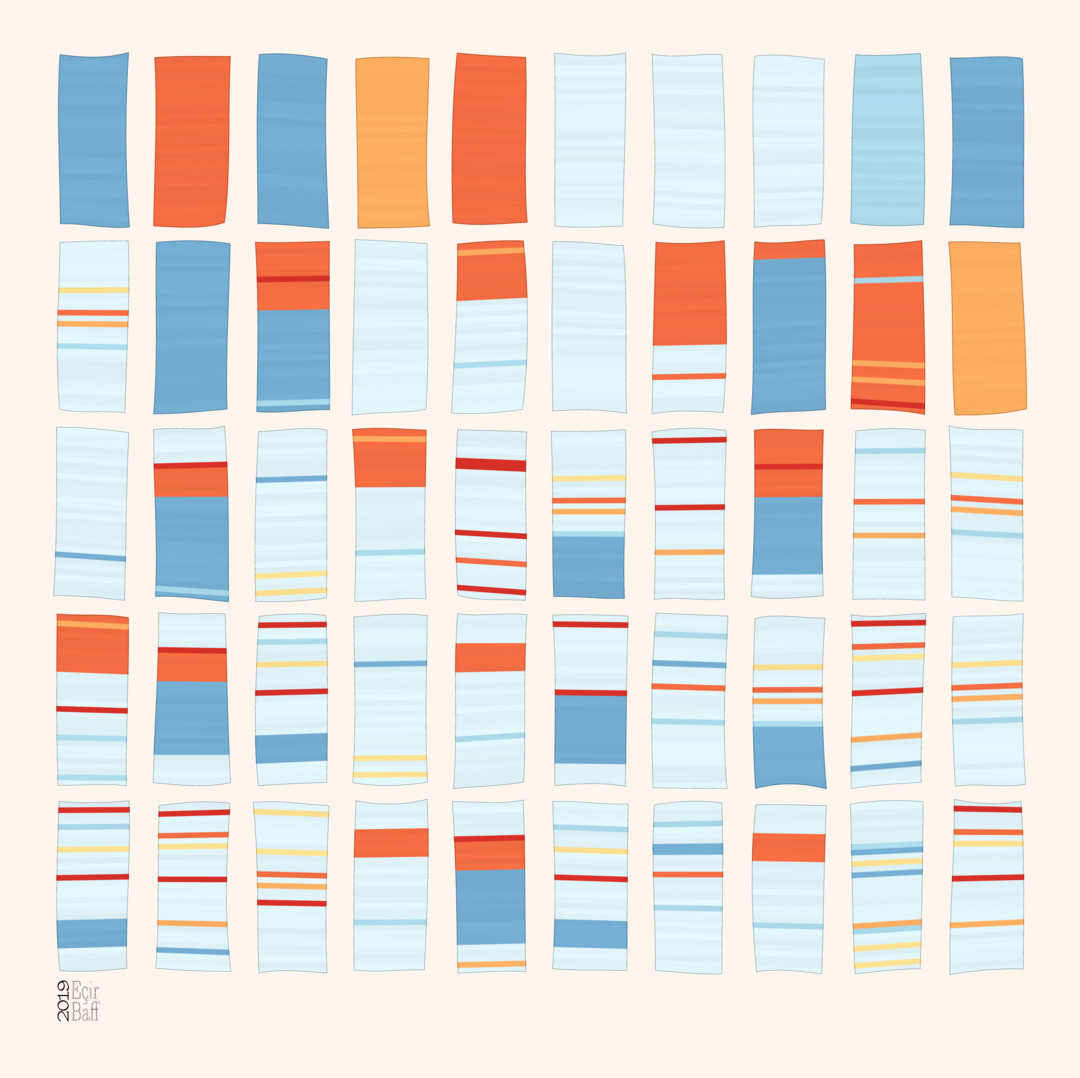

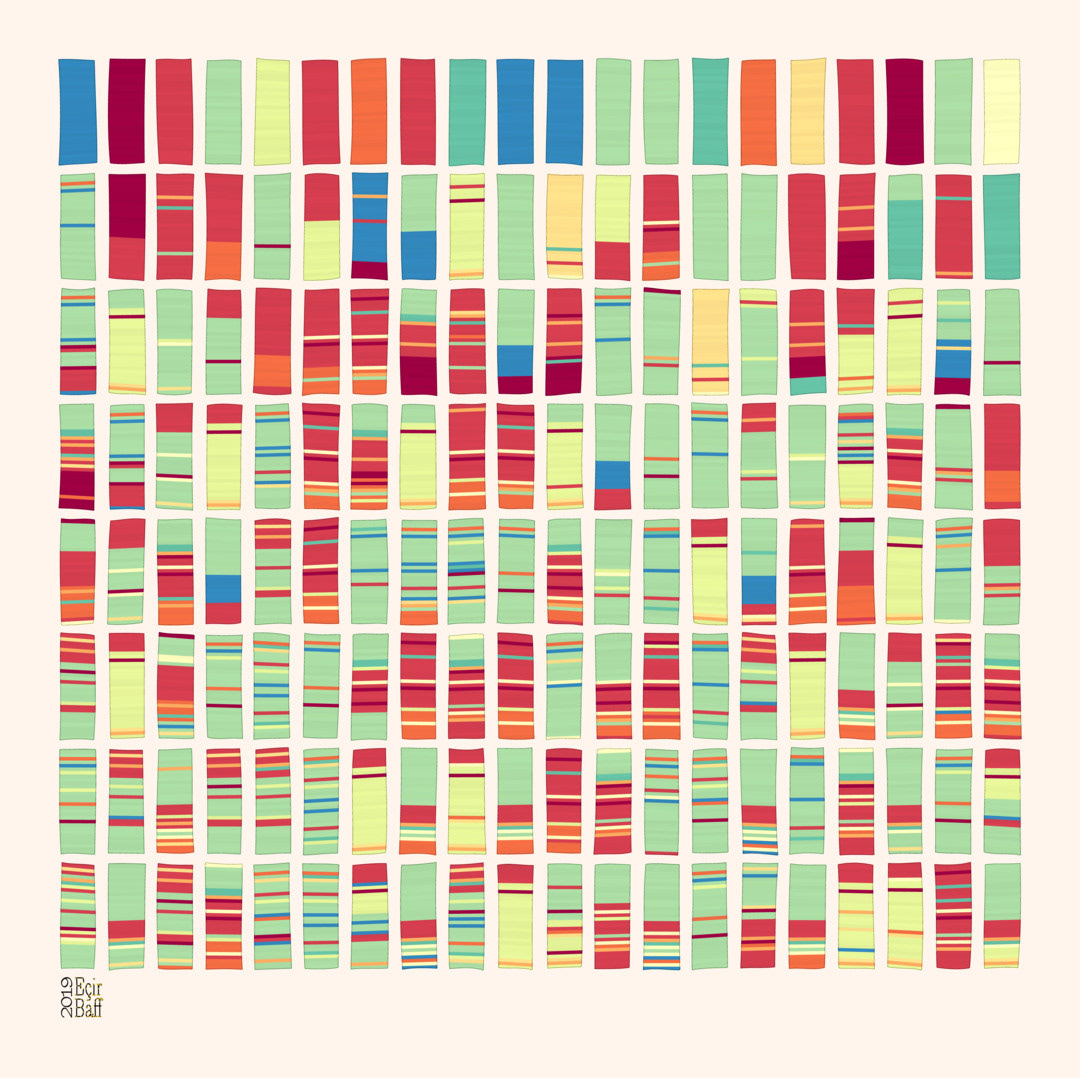

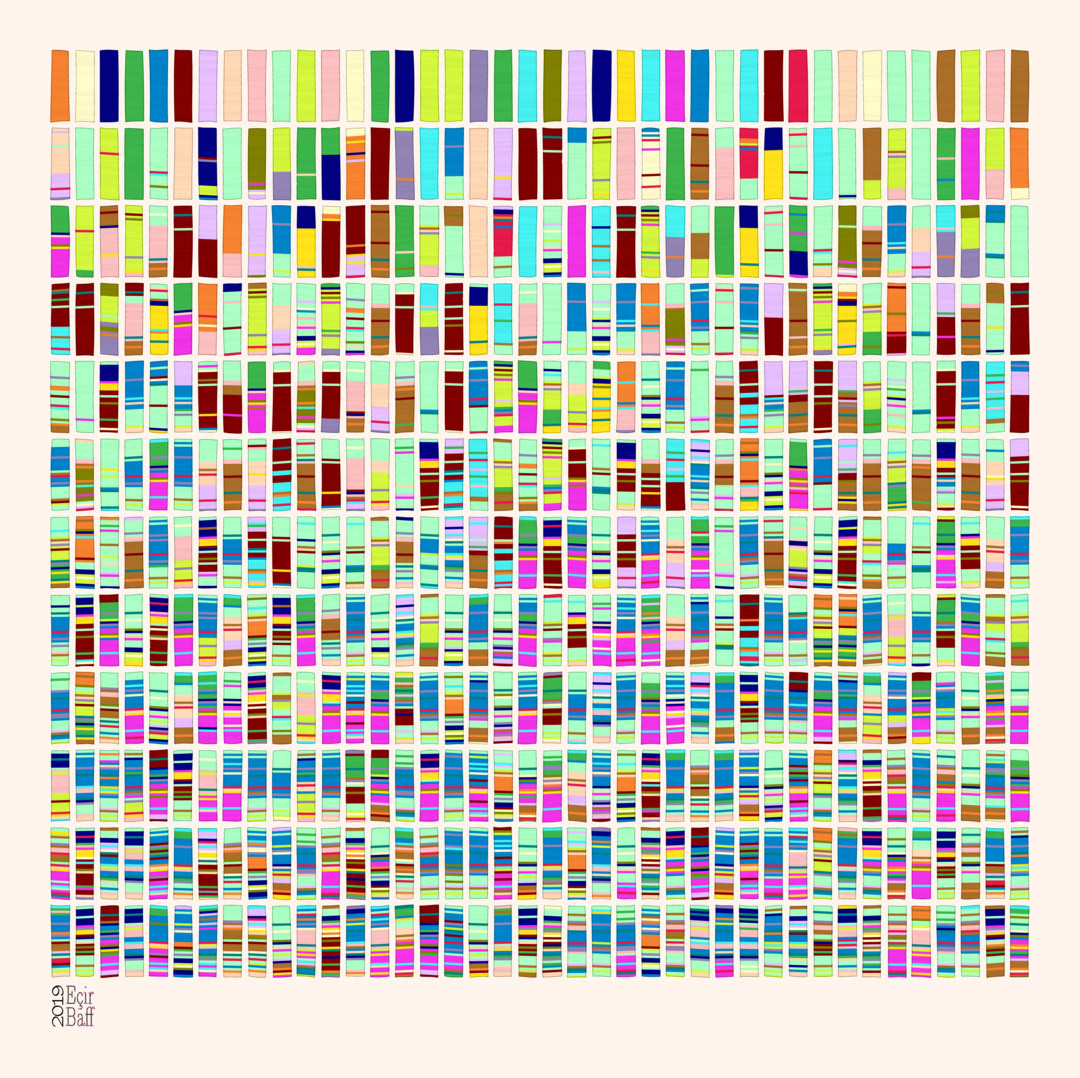
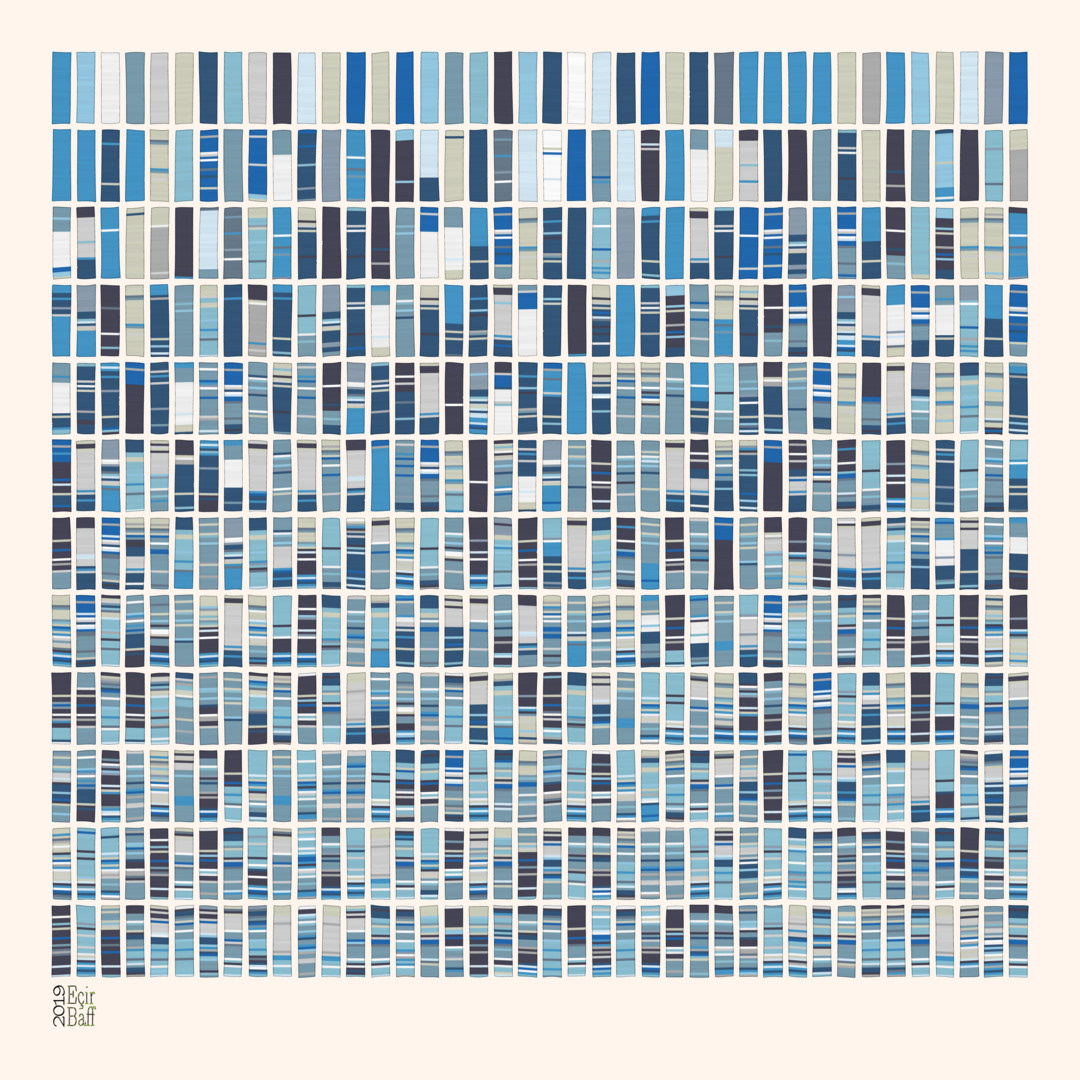
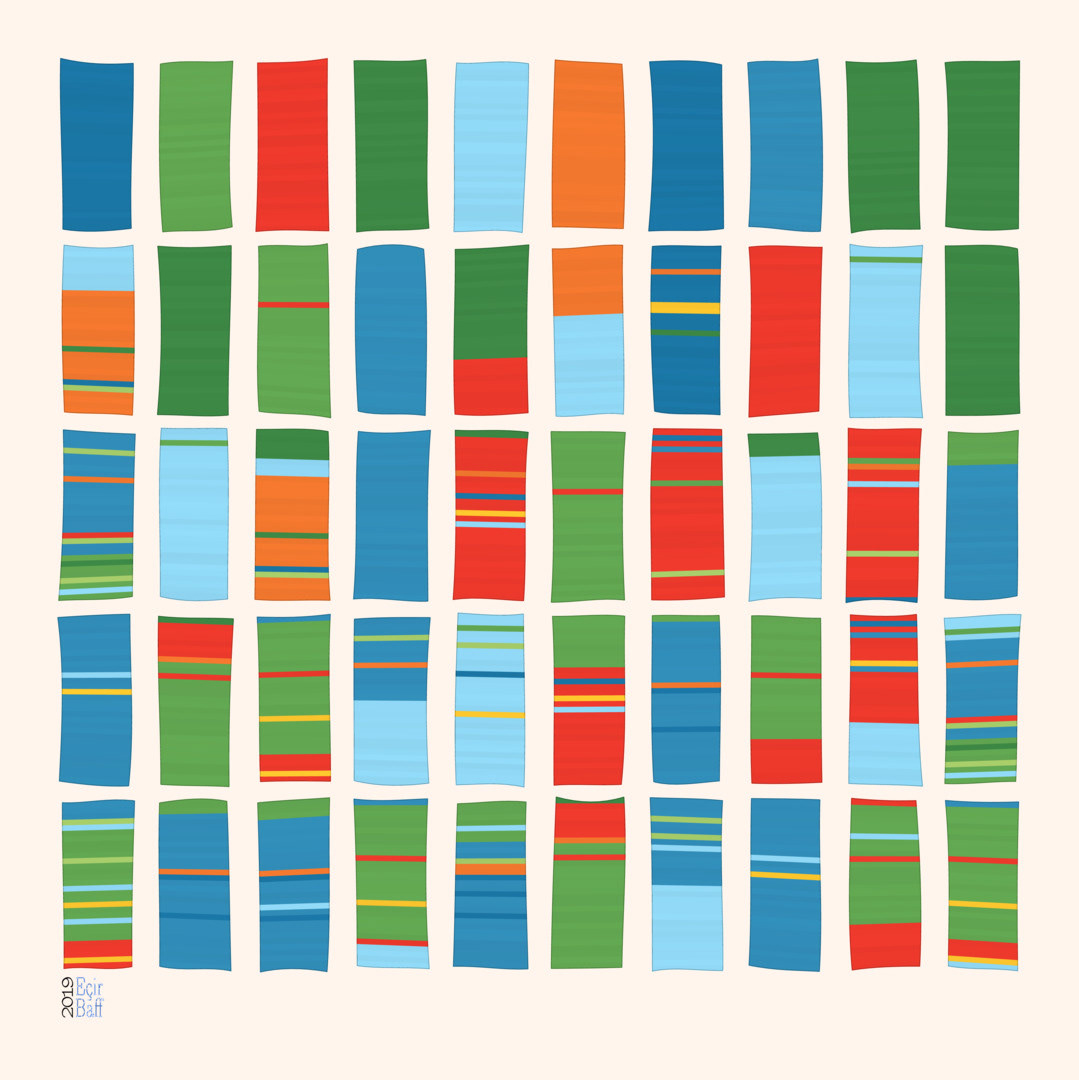

There is a more rich model of evolution, taking into account genetic recombination. In the following figure, we are following the evolution of 10 individuals (10 pairs of chromosomes) on 8 generations. Each child is made by choosing a paternal and a maternal chromosome from the preceding generation (here the line above). In the reproduction process, recombination events create a mix of parental chromosomes (hence the color mixing of the chromosomes), and mutations, as before, cause small local changes in the DNA. Here, these phenomenons are amplified for artistic purposes, but illustrate well what occurs in reality. This is diploid model of evolution.
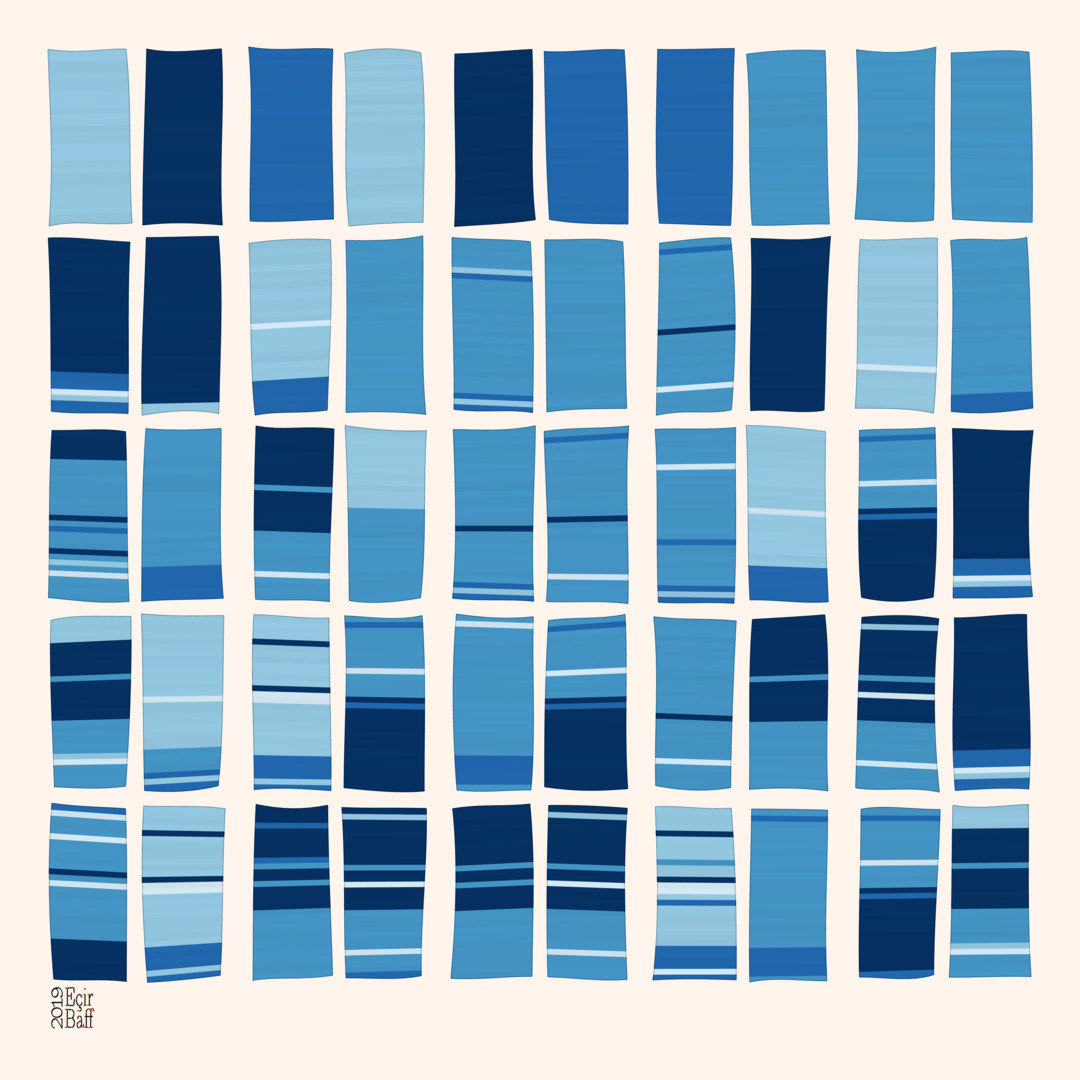
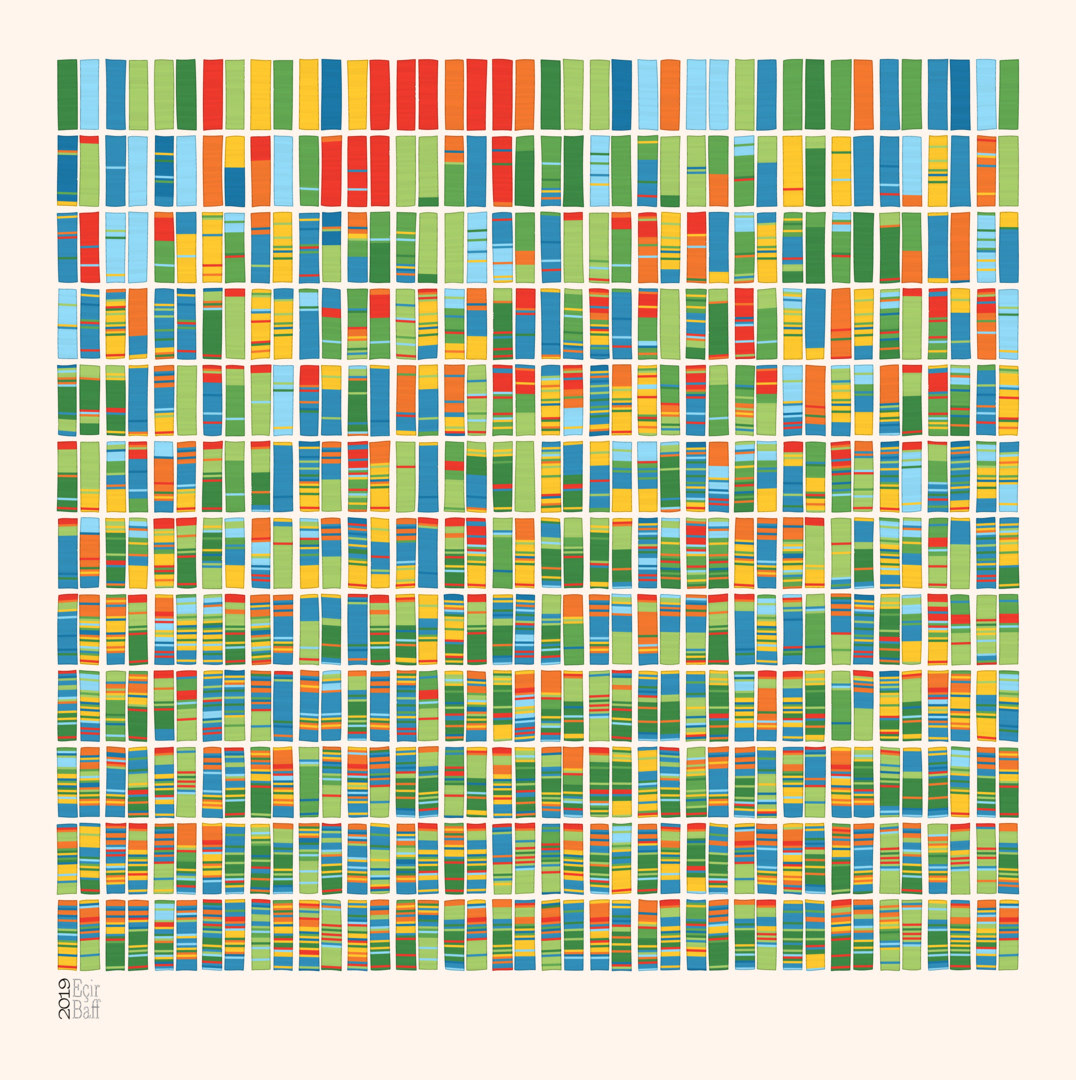

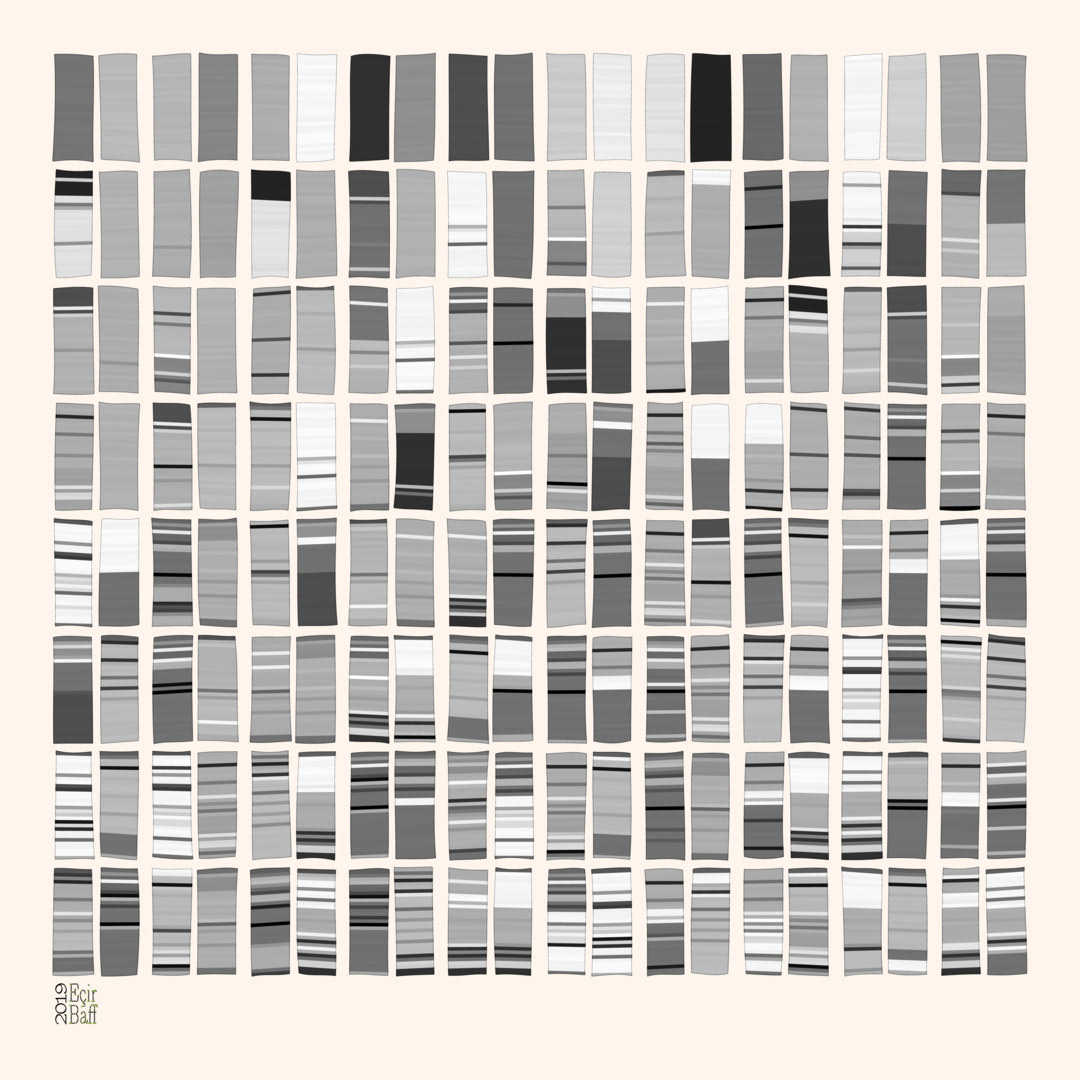
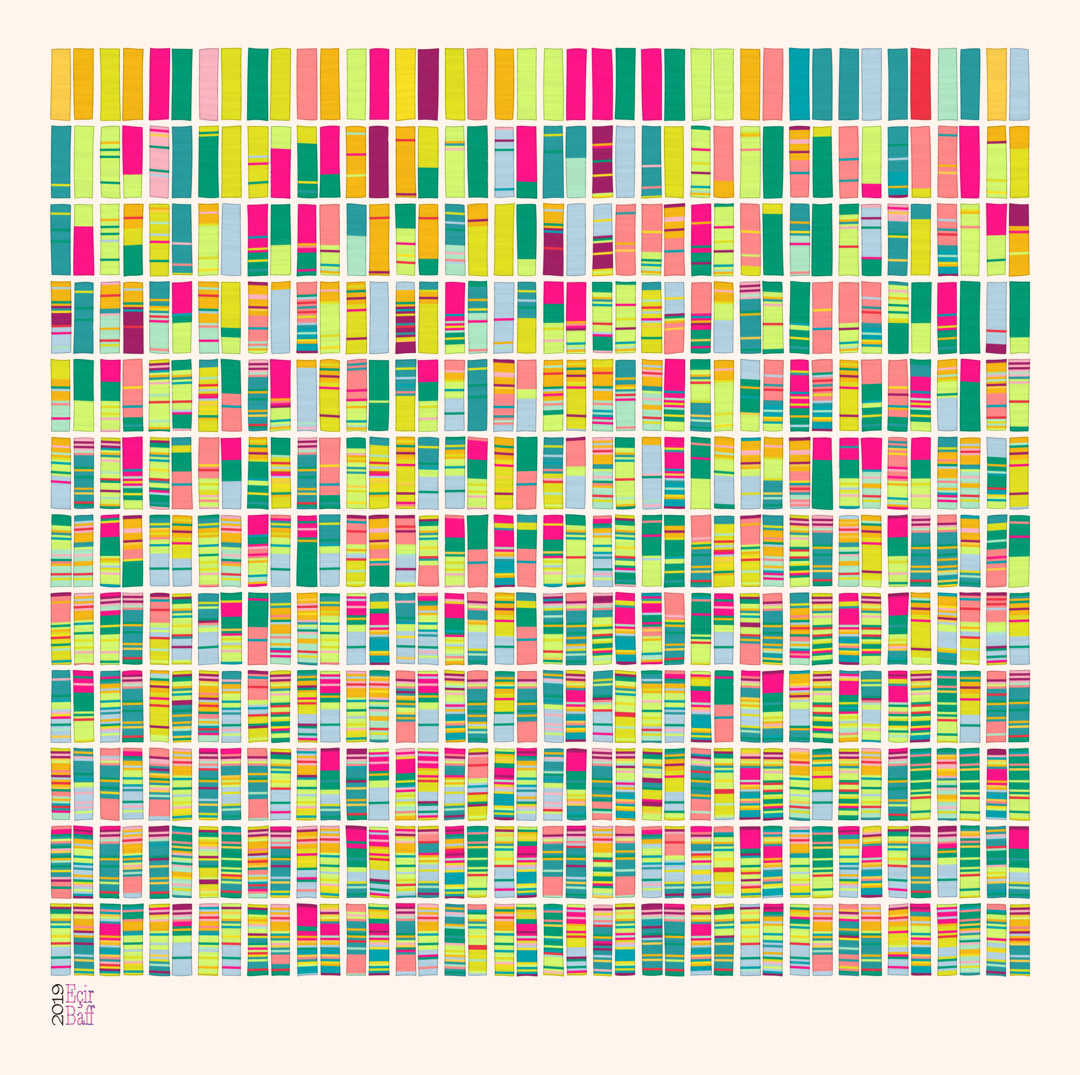
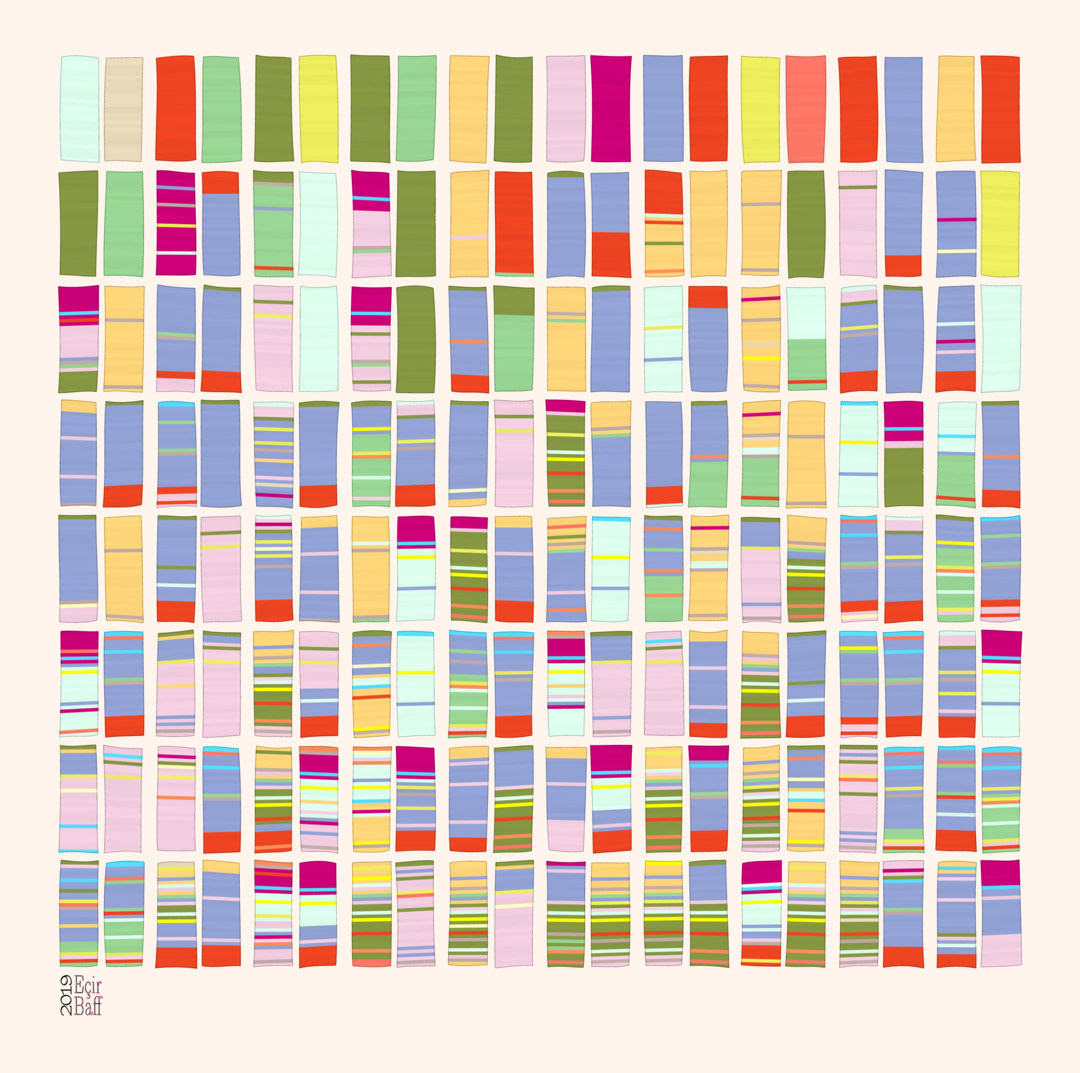
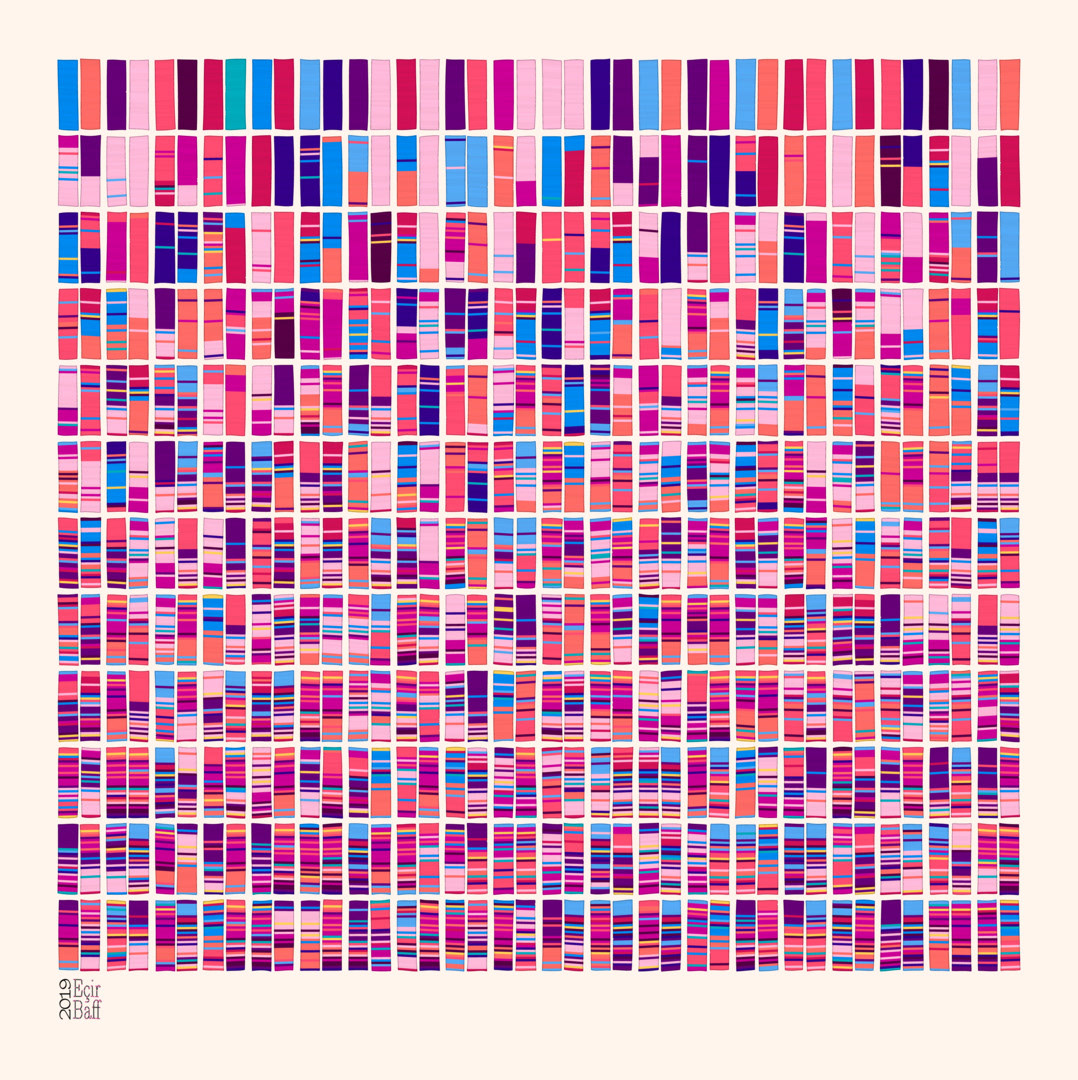

• Evolution •
From a cell comes other cells. Each parent cell gives a random number of children, and each child inherit the DNA of the parent, with some mutations, which create variations in form and color, mimicking real evolution.

